IDS







as well as (it) should have.”
Provost Rahul Shrivastav.
To our readers,
The tide is turning at Indiana University.
It’s been more than a month since IU directed us to stop printing news for you to read in this paper. Since administrators fired our student media director after he defended the Indiana Daily Student’s right to do just that. Since “the campus” cut our paper entirely after we asked them to rescind the directive.
IU clearly didn’t expect the reaction it received.
And, after quite the process, print is back. Late last
month, Chancellor David Reingold reversed course and allowed us to again print our special editions, with no controls on content. The Media School established a Task Force on Editorial Independence and Financial Sustainability, a positive first step toward further protection from administrators. That’s all thanks to you. To our community, alumni, faculty, students and everyone who came together to support us. Student leaders — from IU Student Television and WIUX to IU Student Government — expressed their outrage and
called for action. Press freedom and legal organizations helped draw national attention to IU’s violation of our First Amendment rights and took this issue directly to administrators.
Faculty protested, signed open letters and made their disgust heard. We saw alumni from across the world step up to defend us on social media, at alumni events and more. Soon after the firing and termination, the university had lost at least $1 million in alumni donations.
The university has also acknowledged it has “not handled recent decisions
A recently released memo from President Pamela Whitten expressed some support for redefining free speech principles at IU. We don’t know if this is a boilerplate public relations move or something more, but it indicates something’s changing.
While the IDS has been permitted to print — and print news, which was prohibited under the initial directive — we know this fight isn’t over. We still haven’t received responses to our requests for meetings with Chancellor Reingold and
Former Director of Student Media Jim Rodenbush’s office is still empty. And it remains to be seen what happens after we seemingly lose the freedom to use our established budget at the end of June. So, what can you do to help?
1. Continue reading the IDS across all our platforms
2. Donate to the legacy fund
3. If you’re a student, join student media and share our work with others on campus 4. Send us tips and story suggestions to newstip@id snews.com
5. Don’t let IU forget about what happened We will provide as much information as we can as we work with the task force toward a sustainable future for the IDS. We hope the university follows suit.

Mia Hilkowitz Co-editor-in-chief

Andrew Miller Co-editor-in-chief
By Natalia Nelson nelsonnb@iu.edu
Indiana University’s Office of Student Life has barred 27 of its fraternities from hosting social events following multiple alleged hazing incidents over the past few weeks, according to a letter from Vice Chancellor for Student Life Lamar Hylton to the IU Interfraternity Council.
Hylton restricted fraternities in the IFC from hosting social, philanthropic and brotherhood events, as well as tailgates, group activities, new member education and events with alcohol. Hylton also wrote no first-year stu-
dents are allowed to break their housing contracts to move into fraternity houses.
“The risk is too high to continue this arrangement given the status of the IFC community,” Hylton said in the letter.
The letter did not mention when or if the restrictions would be lifted. He cited several fraternities being recently accused of “engaging in hazing behaviors” as reason for the suspension.
Four fraternities have been placed on cease and desist — a temporary suspension on part or all of their operations — since Oct. 21. Most recently, Tau Epsilon Phi was placed on cease and
desist Nov. 14 for hazing.
Phi Kappa Psi and Alpha Epsilon Pi were put on cease and desist Oct. 21 and Oct. 24, respectively, both due to hazing. Beta Chi Theta was placed on the same order Nov. 4 for hazing, noncompliance with university directives and interference with the university conduct process.
The letter alleged IU Bloomington Chancellor David Reingold had previously written the IFC authorizing increased IU Police Department presence and an “expedited conduct and sanctioning process.” It also said the IFC had previously met with Hylton, the Office of Sorority
and Fraternity Life and the Office of Student Conduct to discuss the ongoing issues.
“The severity of these restrictions reflects the seriousness of the misconduct allegations we have received,” Hylton wrote. “Indiana University will not tolerate activities that put our students in harm’s way or defy the law and our core values.”
Those who break the restrictions, the letter said, will be charged with organizational misconduct. It recommended fraternities work on internal standards and accountability processes, as well as performing membership reviews.
Fraternities will still be allowed to hold standards meetings, engage in community service, hold elections, participate in intramural sports and gather in small groups.
“Your ability to thrive, and frankly, to continue as organizations on this campus, hinges on your collective and immediate dedication to accountability and safety,” Hylton wrote.
In the spring 2025 semester, both the IFC and the Panhellenic Association temporarily paused all social events March 5 until after spring break to address community health and safety concerns.
The IFC represents 27 of IU’s fraternities and is led by President and IU junior Andrew Golde. In a statement for the March 5 suspension, Golde and PHA President and IU junior Abigail Worrel wrote they “will be taking appropriate action to ensure chapter compliance with updated risk management policies from both councils, as well as a detailed action plan going forward.” IU’s sororities were not named in Hylton’s letter, and none have been placed on cease and desist this semester. The IFC did not respond to a request for comment by time of publication.
By Benjamin LeGrand benlagra@iu.edu
A new committee of faculty, administrators and student leaders is set to begin reviewing and developing IU Bloomington’s policies and procedures in spring. Its goal is to streamline and centralize IU’s policies and procedures. Its power will span across every type of university policy, including human resources, fiscal management, technology and academics. The campus committee's policy decisions are subject to approval by the Policy Ex-
ecutive Committee, a body of mostly administrators. That’s concerning to some faculty leadership, who say the move adds another unnecessary layer of administrative oversight without adequate faculty representation. Faculty also question why this new structure is needed over the Bloomington and University Faculty Councils. The campus-level committee comes after the IU Board of Trustees launched the university-wide policy committee and its “Policy Alignment Initiative” earlier this year. Like the campus committee, the goal is to con-
solidate and unify universitywide policies.
Bloomington Faculty Council President Bill Ramos said during a Nov. 4 BFC meeting that IU has around 1,400 decentralized campusspecific policies. When university-wide policy changes occur, it can duplicate already existing campus-level policies, he said. For example, Ramos said each campus has different faculty misconduct policies, and the PEC could ensure each respective policy aligns at the university level.
SEE IU POLICY, PAGE 4

By Grace Fridy gfridy@iu.edu
Five houses in the Green Acres neighborhood have been demolished since midOctober. The houses, built in the 1940s and early 1950s, bordered the eastern edge of Indiana University’s campus and sat along the 300 block of North Jefferson Street.
Now, a real estate development company lists rental properties on its website for the recently demolished addresses, indicating plans to build townhouses on those sites. These listings advertise newly built five-bedroom townhouses that will be available in August 2026 and 2027.
The demolished houses, which were all directly next to each other, were at the forefront of unsuccessful attempts to designate Green Acres as a conservation district last year.
In May 2024, there was a proposal to tear down the houses — possibly to create low-density student housing — but approval for the demolitions was pushed to August 2024. During that time, some Green Acres residents worked to obtain conservation district status for the neighborhood to prevent the houses from being destroyed.
The pursuit of conservation district status ultimately fell through in September 2024 when the application failed to draw support from the Bloomington City Council. City Council President Hopi Stosberg, who represents Green Acres on city council, said in an email the proposed conservation district was very large last year, and that creating such a large district would not have been wise.
“I don’t have an opinion moving forward in terms of official historic preservation as a neighborhood,” Stos-

berg said. Some Green Acres residents are unhappy with the developments slated by The Brawley Group, the property managing company behind the planned townhouses.
“Some of the outrageous things we predicted are happening,” William Schaich, a Green Acres resident, said. “Modest houses on modest lots are being knocked down to build monstrous duplexes.”
Members of the Green Acres Neighborhood Association are concerned that larger buildings like the townhouses going up on North Jefferson Street could disrupt the neighborhood quiet.
“As long as the people living in those redeveloped plexes are good neighbors, I think it could be net neu-
tral in terms of effect on the neighborhood,” Stosberg said.
Amanda Figolah, a Monroe County Community Schools teacher who has lived in the neighborhood since 2021, said living next to a home rented by students is a different experience than living next to a student condo. She enjoys living next to students, but is concerned about loud parties that could come with large student housing developments.
“So, it’s not one place making noise occasionally,” Figolah said. “Now you have a, you know, animal house basically in your neighborhood, which is different than having an occasional party.”
The Brawley Group did not respond to a request for comment by time of publication.
The majority of Green Acres is zoned as R3, with certain sections zoned as R4. These zoning districts are both residential; R3 zoning is intended for residential small lots, and R4 pertains to small residential urban lots, which is sometimes used as a transition between residential and urban development.
Portions of the neighborhood closer to campus, however, are zoned as RM. The RM zoning district, or residential multifamily, is meant for residential development “at a scale that is larger than neighborhood-scale but smaller than urban-scale.”
“It’ll be gradual, but eventually this will be a neighborhood of large, cheaply built duplexes rather than a neighborhood of nice little homes with nice little yards,”
Menge said.
At the corner of South Clark and East Fifth streets, which is in the area’s R3 zoning district, another home is being considered for demolition as requested by the owner. Green Acres resident Margaret Menge is concerned a large student residence will be built on the site.
“So, this would be a large hulking structure, that on a corner in the middle of a neighborhood, replacing a tiny little two-bedroom cottage,” Menge said. “This completely changes the feel of the neighborhood.”
After the neighborhood’s conservation district application was withdrawn last year, Ann Kreilkamp and her neighbors were motivated to revitalize the neighborhood association and increase a
sense of community.
Kreilkamp has lived in Green Acres for over 20 years, and during that time bought the two homes surrounding hers to create a community of urban gardens, the Green Acres Permaculture Village. She has since sold one of the houses but still invites her neighbors to get involved in the garden through word of mouth, signage outside the gardens and her blog.
Formerly president of the Green Acres Neighborhood Association, Kreilkamp, who is 83, passed the torch to fellow Green Acres resident Mariella Arredondo recently.
“Just because people live here temporarily does not mean that they can’t connect or care or learn and grow,” Arredondo said. “So, I would love for more students to.”
Arredondo and Kreilkamp want their neighbors, especially student renters in Green Acres, to know they can get involved in the community.
Kreilkamp and her neighbors host work parties to maintain the garden, which is open to anyone. They also host community dinners at the permaculture village twice a month. That’s how Arredondo came to be involved in the neighborhood association.
“This is a neighborhood that definitely exemplifies the challenges Bloomington faces as the university gets bigger,” Figolah said. “So I think this community is interesting. I’m fairly new to this group, very new to this group, but it’s inspiring to see a sense of community in a time like this, right?”
While Kreilkamp and Arredondo hope to seek conservation district status for Green Acres again in the future, their focus right now is on connecting with neighbors in order to start more conversations about what the neighborhood needs.
By Molly Gregory mogrego@iu.edu | @mollygregory22
Indiana University could adopt a new set of free speech values called the Chicago Principles, according to a memo published by the IndyStar on Nov. 17.
In the undated memo, President Pamela Whitten asked the University Faculty Council to examine the Chicago Principles and make a recommendation on whether the university should adopt the standards. IU spokesperson Mark Bode confirmed the veracity of the memo to the Indiana Daily Student.
The Chicago Principles, sometimes called the Chicago Statement, refer to a report produced by the Committee on Freedom of Expression at the University of Chicago in 2015. Over 100 educational institutions have adopted the statement, including several Big Ten schools.
Among other free speech commitments, the threepage statement says “Because the University is committed to free and open inquiry in all matters, it guarantees all members of the University community the broadest possible latitude to speak, write, listen, challenge, and learn.”
It also says “debate or deliberation may not be suppressed because the ideas put forth are thought by some or even by most members of the University
community to be offensive, unwise, immoral, or wrongheaded.”
IU has faced public scrutiny over its approach to First Amendment rights. In September, the Foundation for Individual Rights and Expression ranked the university third-worst out of 257 schools for free speech ratings.
That rating stemmed from “speech controversies” that occurred between 2024 and 2025, several of which had to do with IU’s Expressive Activity Policy. The Expressive Activity Policy, or BOT-33, serves as IU’s free speech policy. It says IU is committed to protecting the rights of students, academic appointees, staff, guests and visitors to assemble, speak in public areas of campus, write, publish and invite speakers on any subject.
Several stipulations are included regarding how individuals can participate in expressive activity. Expressive activity “may not materially and substantially disrupt official activities, business, or operations of the University,” according to the IU policy.
Under the policy, temporary structures, like tents, involved in expressive activity must be pre-approved by the university. This contingency was added to the policy the night before the start of a pro-Palestinian encampment on Dunn Meadow in April 2024, resulting
in the arrest of more than 50 protestors over two days.
IU also met criticism in October for firing former IDS adviser Jim Rodenbush after he refused to dictate content in the IDS’ print publication. IU also initially ordered the IDS to stop producing its print edition, but ultimately rolled back that decision after facing backlash.
This month, IU School of Social Work lecturer Jessica Adams was removed from teaching her class following an intellectual diversity complaint about a lesson where she mentioned white supremacy.
In response to these speech controversies, FIRE began a billboard campaign condemning IU’s actions. The first billboard in the campaign, located near IU campus, reads, “Indiana University covered up the truth. What are they hiding?”
Laura Beltz, director of policy reform at FIRE, said “the devil will be in the details” when it comes to whether IU will adhere to the Chicago Principles.
“I think that if the university were to adopt a statement making a commitment to free speech clear, that would be a great first step,” Beltz said. “The university would then, of course, have to actually live by those principles, and so when controversies come in the future, we’d want to see the university then invok-
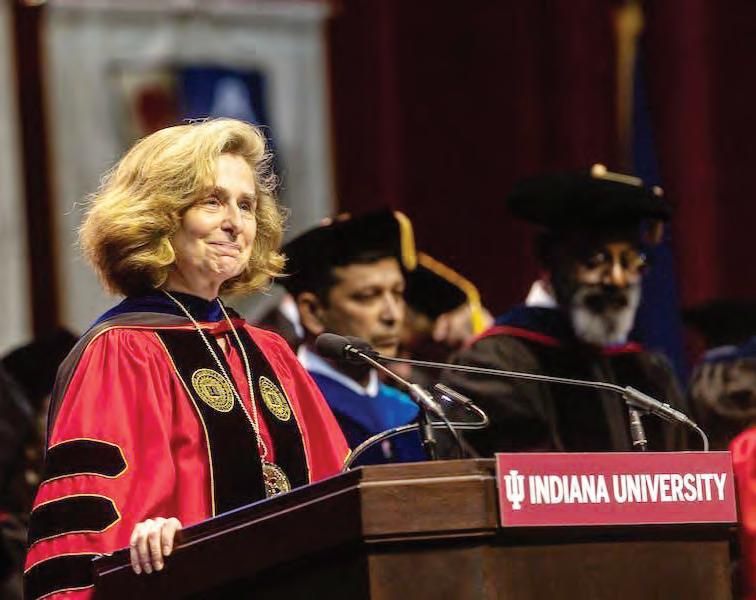
ing that statement to protect students’ free speech rights and faculty members’ academic freedom rights.”
Beltz said the Expressive Activity Policy and the Chicago Principles operate differently, with the Expressive Activity Policy being a nuts-and-bolts set of rules that can change depending on university circumstances and the Chicago Principles being a pre-existing set of values.
“I think that there is a little bit of a difference,

where this sort of commitment would be something that guides the university, that isn’t a moving target, that isn’t changed the night before a protest,” Beltz said.
Columbia University, one of two schools ranked lower than IU on FIRE’s free speech rankings, adopted the Chicago Principles in 2016. Major free speech controversies, including the school’s approach to its own pro-Palestinian encampment, have occurred at Columbia University since.
Beltz said that the Chicago Statement is a set of principles rather than an enforceable policy, which is how instances like the one at Columbia University can happen.
“At the end of the day, if they aren’t actually going to apply the principles and practice, it’s not worth much, and it’s not going to be this fantasy that cures all of the issues,” Beltz said. “They’re going to actually have to live up to it and practice it.”
Buskirk Chumley Theater buskirkchumley.org
Cedargate Apartments cedargateliving.com
City Church For All Nations citychurchbloomington.org
College Collection Apartments collegecollectionapts.com
Constellation Stage & Screen SeeConstellation.org
CRE Rentals crerentals.com
Echo Park liveatechopark.com
Elkins Apartments elkinsapartments.com
FlyteDesk
flytedesk.com
Forest Ridge Apartments forestridgebloomington.com
Former IDS Staff members
Foundation for Individual Rights and Expression thefire.org
Go Express Travel goexpresstravel.com
Goodfellas Bloomington goodfellaspizzeria.com/kirkwood
Granite Student Living granitestudentliving.com/indiana-university
Hamilton Lugar School hls.iu.edu
IU Cinema cinema.indiana.edu
Thank you to the businesses and organizations below whose support helps sustain the IDS and protects free speech in student media. For more information, scan here.

IU Department of Comparative Literature comparativeliterature.indiana.edu
IU Department of French and Italian frit.indiana.edu
IU Language Departments, Programs, Centers, and Institutes go.iu.edu/IULanguages
IU Sociology Department sociology.indiana.edu
IU Student Legal Services getlegal.indiana.edu
IU Theatre and Dance theatre.indiana.edu/on-stange/current-season
The League Bloomington theleaguebloomington.com
The Monroe Apartments themonroeliving.com
Morgenstern Books morgensternbooks.com
Mother Bear's Pizza motherbearspizza.com
Omega Properties omegabloomington.com
Pottery House Studio potteryhousestudio.com
Renaissance Rentals renaissancerentals.com
Stratum at Indiana Apartments thestratumatindiana.com
Unity of Bloomington unityofbloomington.org
“The reality is, we do have a very large and probably ineffective policy framework at the university. It's something that surely has grown over our last 200 and some years, and it was decided it's time to kind of revisit it and come in line,” Ramos said in an interview.
“So we did some benchmarking, and we did find, compared to peers, we have an enormous policy process.”
However, Ramos said the campus-level committee will still have full authority over procedures, the stepby-step instructions, tasks and actions for how each campus implements a policy.
Who is on the campus policy committee and how will it work?
BOT-02, which Ramos jokingly described at the BFC’s November meeting as the “policy on policies,” was revised during the Board of Trustees’ June meeting. Each campus chancellor is responsible for creating a campus policy committee.
At the BFC meeting Nov. 18, Ramos presented a preliminary draft of who could potentially make up Bloomington’s committee. This included:
• The BFC president Three school/college policy chairs, appointed by the provost
• Three faculty at-large appointed by the BFC
• The provost
• Vice provost for Faculty and Academic Affairs
The four vice chancellors
• The senior director of IU Human Resources
• A general counsel representative
• The IU Student Government President (non-vot-
ing if the president is not employed by the university)
• The Graduate & Professional Student Association president (non-voting if the president is not employed by the university) The staff council president The committee will also have additional support staff serving as non-voting members.
Ramos is collecting feedback on who else should be included on the committee. Feedback can be submitted through the QR code below. The committee membership must be finalized by the spring semester.

Feedback can be submitted through this online form.
The campus policy committee starts by reviewing policies submitted by university departments and offices. Then, if the policy change moves forward, the CPC will “identify stakeholders to be included in the process” and send to the Policy Executive Committee — the university-wide committee.
Then, it’s up to the PEC to decide if the campus-level policy aligns with university policy and if the request can move forward. If the PEC approves, it goes back to the campus committee to gather feedback, draft the policy, vote and send the policy to IU Bloomington Chancellor David Reingold. The BFC will be involved in this policy
ACROSS 1 Shirts but not skirts
5 *State fruit of Georgia* (2024) 10 "Stat!" 14 Unadorned
Stand 16 *Astronomer Sagan* (1996) 17 Oxford outlets? 19 Big brass instrument 20 *Pecan alternative* (2008)
21 Browser tab image
23 Cellist Ma 25 Never ___ 26 Makes up 30 Case for Scully and Mulder
33 Raw fish dish 34 Mythical hunter
35 The Y of FANBOYS
38 Lucky few on Thanksgiving, and what the shaded answers are the names of 42 Programmer Lovelace
43 Microscopic hairs
44 "Aren't you a little short ___ stormtrooper" 45 "___ Navidad" (a song that it's still too early to play)
46 Artist M.C. 48 ___ monster 50 Volcano for Vulcan's forge
development phase, Ramos said.
The PEC will review all policies passed by this campus policy committee. The executive committee consists of primarily university administrators and three University Faculty Council co-chairs — Ramos, Philip Goff from IU Indianapolis and Susan Popham from IU Southeast.
What is the universitywide Policy Executive Committee?
BFC President-elect
Heather Akou raised concerns about the thoroughness of discussion on the PEC’s role in enacting policy at the Board of Trustees meeting in June. She said the board only discussed these changes for a handful of minutes.
“I’m not sure the trustees (especially the three new trustees appointed by Gov. Braun) had any idea what they were voting on.” Akou said in a text to the Indiana Daily Student. “They framed it as changes that were necessary to comply with new state laws, primarily SEA 289 and HEA 1001.”
SEA 289, passed in early May, defines diversity, equity and inclusion as any effort to “manipulate or otherwise influence the composition of employees with preference to race, sex, color or ethnicity.” It also says state agencies cannot treat individuals differently or with preferential treatment based on any of those four categories.
HEA 1001 is the state budget bill, passed in May. Language added to the bill allowed Gov. Mike Braun to remove alumni-elected trustees and defined faculty governance organizations as “advisory only.”
According to the recap documents from the June 12 BOT meeting, the PEC
52 Puts a new book cover on 55 *Bravery* (2009) 60 Agenda entry 61 Unwelcome participant
63 *Carrots' companions* (2018)
64 Hitchcock's "___ for Murder"
65 Da Vinci's "___ Lisa"
66 Mathematician Noether 67 *Cider variety* (2010) 68 Gibbons and gorillas DOWN 1 3 tsps. 2 Honolulu's island 3 Spring dance for a Senior
Ooze
Wicker chair sites
Wood for some piano keys
Express, as grievances
Scale start 9 "___ Rebel" (1962 #1 hit)
On the move
Soy or sriracha 12 ___ day (tree holiday)
Terrier named after a
changed 26 total university-level policies, including BOT-02, without faculty input to fit new state law requirements and update appropriate officeholders of policies. The documents mention HEA1001 and 1041 and SEA 289 and 448 as laws the policies needed to fit.
HEA 1041, which bars transgender women from competing in women’s sports, is mentioned as a law requiring university policy change in the documents. No specific policy changed at the meeting cites HEA1041 as the reason.
SEA 448 is the higher education and workforce development bill. It ensures that any student who earns the “enrollment honors plus seal,” is accepted into Indiana public colleges and universities.
According to IU’s policy portal, 79 policies have been revised since the June 12 BOT meeting. A map of the new university-wide policy process can also be found on the site.
Ramos said these policies were reviewed hastily to comply with the law but will eventually go through a full review with an opportunity for public comment. The policies being reviewed by the PEC are open to a 10-day public comment period on IU’s policy portal. The portal lists policies under current review and ones that have been reviewed in the past six months.
The PEC does not currently hold any public meetings and the only way to forward a complaint or revision during the respective policy’s public comment period is to send one to the designated email, policies@ iu.edu.
Concerns persist
The changes to BOT-02 from the June 12 meeting
reaffirmed faculty governance’s role as advisory-only, and stated that university policy overrides all campus, college and unit policies. It also says that appropriate policy owners — the respective university office that originally pitches a policy idea — are required to discuss policies with appropriate representatives from “target and affected audiences” for all phases and proposals of the policy development process.
“I'm seeing the effect of what's happening and from, you know, an administrative end and an efficiency end how this is going to work.”
Bill Ramos, Bloomington Faculty Council president
The IU chapter of the American Association of University Professors called attention to the changes of BOT-25, which applies to the merging and reorganization of academic programs, pointing out several changes moving decisions away from faculty governance organizations. The changes also removed language that stressed the importance of faculty consultation on academic department reorganization through the BFC, IU Indianapolis Faculty Council or the UFC.
David McDonald, president of the AAUP’s Bloomington chapter, said the new policy procedure continues to disregard faculty opinion and governance, pointing to the disparity of administrators versus actively teaching faculty on the draft of the new committees.
“One thing I noticed is a further eliminating of faculty insight and faculty review, faculty conversation and dialogue on these
committees. Take a look at who’s on the committees,” he said. “The power of creating policy is becoming further and further distanced from the faculty who work on this campus.”
Moira Marsh, chair of the BFC Student Academic Appointee Board of Review, had similar opinions on the changes, calling out what she sees as redundancies and the fast pace of the process. She also pointed out the non-elected nature of the ruling committees.
“It's creating an entire sort of parallel structure to an elected governance structure that we have long had,” she said. “You know, we've had the BFC for decades. We’ve had the UFC for decades. It's elected, it's transparent.” Ramos acknowledged faculty concerns. He said the change in policy structure can feel like a loss for faculty, but he’s feeling “less that way” the more he learns about the process.
“I'm seeing the effect of what's happening and from, you know, an administrative end and an efficiency end how this is going to work,” he said. “But again, I fully acknowledge in the culture and climate currently, anything that feels like a loss, intensely feels like a loss.” He said faculty will still have the opportunity to voice their opinions on the committees, with the UFC co-chairsserving on the PEC and the four potentially serving on the Bloomington campus committee.
“The question comes up, why isn't this just the BFC?” Ramos said. “I guess my answer to that is the people that, you know, at the upper levels of the administration felt there needed to be something done to make sure this happens, that this (policy) alignment happens.”
World AIDS Day is Dec. 1, campus organizations are collaborating on programming
By Grace Fridy gfridy@iu.edu
Students and staff sewed and decorated fabric sections of a panel for the AIDS Memorial Quilt, which is considered the largest community art project ever, on Tuesday afternoon. Gathering at the NealMarshall Black Culture Center, students decorated their own small sections for the quilt and learned about selfcare habits ahead of World AIDS Day on Dec. 1. Students previously met at the center to work on the patchwork quilt panel Friday. The events were hosted by the Queer Student Union and LGBTQ+ Culture Center.
The AIDS Memorial Quilt
is an art project meant to commemorate the lives and stories of those who have died from HIV/AIDS, with nearly 50,000 panels dedicated to over 110,000 people. QSU President Kyleigh Brown said the organization chose to create a panel for the quilt so that queer students would be more aware of the history surrounding the AIDS epidemic. Worldwide, over 39 million people have died of AIDS since 1981, including 500,000 people in the United States, where 1.1 million people live with HIV/AIDS each year. People with HIV/ AIDS faced increasing social stigma as the epidemic peaked in the 1980s and 1990s.
“My viewpoint is that IU has a lot of future leaders in it, and by teaching history about HIV and AIDS, we can make sure that the mistakes that led to that crisis being so large don’t happen again,” Brown said.
The memorial quilt project began in San Francisco, but has expanded across the nation, with nine state and city chapters, including one in Indiana. The first display of the quilt was at the National Mall in Washington, D.C., in 1987 with 1,920 panels.
The panel QSU is making will be 3 feet by 6 feet, comprising smaller fabric squares made by each person. Since its inaugural display, the quilt has traveled

Tue. - Thu..: 8:30 a. m. - 4:30 p. m.
Lunch 12:30 p. m. - 1:30 p. m. Mon. & Fri.: Appointments Only 1320 W. Bloomfield Rd., Suite B 812-287-8851 btownorthodontics.com
Baron D Hall, DDS, MSD
Jake Willhite, DDS, MSD
Erica Hall, Hannah Elliott, Kaitlyn Jacobs, Marilyn Lee, Adrian Price

Baron D Hall, DDS, MSD Jake
Willhite, DDS, MSD Orthodentists
Erica Hall, Hannah Elliott, Kaitlyn
Jacobs, Marilyn Lee, Adrian Price
With modern techniques and a fun style, B-town Orthodontics is the most up-and-coming orthodontics office in the Bloomington area!
We offer the latest technologies including invisalign, gold brackets, laser treatments, and even mini implants that can help restore missing teeth and even eliminate the need for surgery. B-town Orthodontics offers FREE consultations and don’t forget to download The Braces App, the hottest free app designed by B-town Orthodontics’ Dr. Baron Hall.
Tue. - Thu.: 8:30 a.m. - 4:30 p.m.
Lunch 12:30 p.m. - 1:30 p.m.
Mon. & Fri.: Appointments Only 1320 W. Bloomfield Rd., Suite B 812-287-8851 btownorthodontics.com


Ryan D. Tschetter, DDS Lauren R. Hoye, DDS Jackson Creek Dental is conveniently located on South College Mall Road. Most insurances accepted, including the Indiana University Cigna Insurance plans as well as the IU Fellowship Anthem. Dr. Tschetter and Dr. Hoye offer state of the art dental technology such as Zoom whitening, same day crown appointments, and Invisalign. We also provide restorative, cosmetic and emergency care. We pride ourselves in giving the best care to our patients while offering a pleasant yet professional atmosphere.
Mon. - Thu.: 7 a.m. - 5 p.m. Fri.: 7 a.m. - 3 p.m. 1124 S. College Mall Rd. 812-336-5520 jcdsmiles.com
across the country to raise funds and awareness for AIDS. Sections of the 54ton tapestry are distributed across the country for display on World AIDS Day, including at the Indiana Memorial Union from Dec. 1 to Dec. 5.
One attendee, Keaton Evans-Black, an arts-based wellness experiences manager at the Eskenazi Museum of Art, said he loves to see the events the center plans.
“I just always appreciate how many different events use art as part of their rest and relaxation vibes,” EvansBlack said. “Because it helps people understand that making art can be relaxing.”
Collaboration between campus organizations has been an important part
of making the quilt panel, and other World AIDS Day events, possible. Evans-Black planned to bring some of the art supplies to the Eskenazi Museum so the Common Threads fiber art group he organizes could contribute to the panel.
“Even though I’m not super comfortable with hand sewing, I’m much more of a machine sewing person, but it’s still nice to be able to put your hands on something and know that it’s going to be part of something bigger,” Evans-Black said.
The LGBTQ+ Culture Center will be collaborating with student, campus and community organizations to hold more events the week of World AIDS Day , includ-
ing HIV and sexually- transmitted infection testing, a sexual health presentation at the IMU on Monday and HIV/STI testing at the center Thursday.
Three Indiana panels of the AIDS Memorial Quilt will be on display throughout the week of World AIDS Day at the IMU. Upon completion, the QSU panel will be sent to San Francisco, where the full quilt is housed.
Sections of the quilt have been displayed at IU previously, most recently in 2022, when the Rural Center for AIDS/STD Prevention honored the quilt project’s cofounder, Cleve Jones, a native of West Lafayette, Indiana, with the Ryan White Distinguished Leadership Award.

With modern techniques and a fun style, B-town Orthodontics is the most up-and-coming orthodontics office in the Bloomington area! We offer the latest technologies including invisalign, gold brackets, laser treatments, and even mini implants that can help restore missing teeth and even eliminate the need for surgery. B-town Orthodontics offers FREE consultations and don’t forget to download The Braces App, the hottest free app designed by B-town Orthodontics’ Dr. Baron Hall.

NEW OUTLOOK
COUNSELING CENTER INC
Cheryl Mansell, LCSW RPT
Kyle Fouch, PMHNP
Alisa Doty, LMHCA
Kaitlyn Merwin, LCSW Chi-Wei “Diana” Kan, LMHC
Angie Miller, LMHCA
Marisa Soliday, LSW
Stephanie Blanford, LSW
Alexandria Conger, LMHCA
Amber Hancher, LSW Sydney Conger
Providing individuals, couples and family counseling as well as psychiatric evalutation and medication management. We ensure that individuals of all ages, experiencing mental illness can better manage life.
Mon. - Thu.: 9 a.m. - 6 p.m. Fri.: 9 a.m. - Noon 5010 N. Stone Mill 812-929-2193 newoutlookcc.org

Ricardo Vasquez MD Medical evaluations: varicose veins, leg pain and swelling. No refund needed.
Mon. - Fri.: 8 a.m. - 5 p.m. 815 W. Second St. 812-336-6008 vascularcenterandveinclinic.com
Optometry
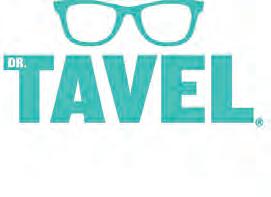
Dr. Andrew Jones, OD Dr. Marzia Zamani, OD Dr. Mark Houser, OD
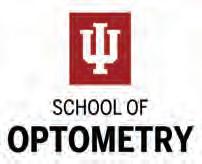



Austin C. Starr, D.D.S Board Certified Oral Surgeon HOOSIER ORAL SURGEON
Dr. Starr is an IU Football Alum who provides pain-free experiences for all Hoosiers with IV sedation. He specializes in Wisdom Teeth Extractions, Dental Implants and Plasma Therapy while utilizing 3D imaging technology. Accomplish fast and predictable healing with Plasma Therapy to avoid dry sockets after extractions. Voted the Most Trusted in Bloomington, they look forward to accomplishing continued successful results every day for all Hoosiers. Go IU!
Mon. - Thu.: 8 a.m. - 5 p.m. Fri.: 8 a.m. - 4 p.m. 473 S. Landmark Ave. 812-318-1023 starroralsurgery.com
different spinal conditions and problems, while also addressing the body as a whole. We provide effective chiropractic care helping patients reduce stress, improve mobility and spinal health. The quality treatment we provide is always fit to your individual needs and goals. Let us help you achieve and maintain good spinal health. We look forward to meeting you!
Mon. - Thu.: 8 a. m. - 6 p. m. 1121 W. Second St. 812-336-2225 bloomingtonchiropractor.com
Dr. Tavel Family Eyecare is your partner in your personal eyecare journey. Since 1940, the company has believed that every Hoosier deserves quality eyecare and vision solutions at an affordable price.
Dr. Tavel offers comprehensive eye exams, special testing, management of eye diseases, glasses, contact lenses and much more, all backed by an insurance acceptance guarantee. The company is committed to advancing eye health by investing in the latest technology and providing treatements that are right for every patient’s unique needs.
Mon.: 7:30 a. m. - 6 p. m. Tue.: Closed Wed.: 7:30

LYON LENS
Odessa Lyon (she/her) is a senior studying biology and English, pursuing a minor in European studies.
Insulin should have belonged to the world; the researchers who discovered this monumental treatment for diabetes each sold their patents for $1 to the University of Toronto so insulin remained accessible to everyone who needed it, even splitting their Nobel Prize money. These scientists were in the game to change people’s lives, not count their spoils.
Who is in it for the money? Today, drug companies like Eli Lilly and Novo Nordisk have replaced older, animal-derived insulins with monopolies over newer, high-priced versions. Now, they’re raking in more profits than ever with the emergence of the latest diabetes treatment — Glucagon-Like Peptide-1 (GLP-1) Receptor Agonists like semaglutide (Ozempic, Wegovy) and tirzepatide (Mounjaro, Zepbound).
Big Pharma’s rush for profit has clouded any notice of dangerous medical red flags. In particular, doctors have increasingly noticed difficulty in reading PET-CT scans of GLP-1 users. These imaging tools usually look for signs of cancerous regions via patterns of radioactive molecule absorption. But for GLP-1 users, the absorption pattern is disrupted. However, while cancer rates rise in the United States, this issue goes unaddressed and unsolved, and misread scans cost time and lives.
Nor do we fully understand other possible shortand long-term effects of GLP-1 drugs’ popularity. The most common issues, often digestive — constipation, di-

arrhea, loss of appetite, nausea, vomiting — are brushed off. This leaves GLP-1 users vulnerable to social media grifters who manipulate trust to position themselves as commiserating friends and credible physicians. Even as researchers are wary and consumers are anything but, people struggling with diabetes are often still unable to fill their prescription and some pharmacies have long waiting lists. Still, the FDA took semaglutide off their shortage list, revoking any federal assistance to fill that gap, heedless of shortage concerns — so much so that two pharmacy organizations are suing the FDA for the “reckless and arbitrary decision.”
People are desperate, turning to gray-market drugs
not yet approved by the FDA, which have caused serious complications like overdosing, severe nausea, vomiting and dehydration. It’s clear this problem is one of demand, not supply, when new GLP-1 prescriptions have decreased by 10% for diabetes and more than doubled for weight loss from 2011 to 2023. Worse, a 2021 study in the JAMA Health Forum demonstrated “notable racial, ethnic, and socioeconomic inequities in GLP-1 RA use,” revealing “biases in health care delivery.” After a health insurance change made his current Ozempic inaccessible, one GLP-1 user found a 10-month supply of tirzepatide in 10 vials of white powder. “He makes his own medicine by mixing it with
sterile water and then in-
jects himself,” Sydney Lupkin, NPR’s pharmaceuticals correspondent, said in an October episode of NPR’s All Things Considered. Thirdparty online companies saw an opportunity to extort people like Phil, putting them at extreme risk of contamination and counterfeit ingredients. Scientists called it “serendipity” that this helped with weight loss. But inaccessibility and new research prove the opposite.
Your small intestine already makes the GLP-1 hormone and, when released, lowers blood sugar by signaling insulin release, blocking glucagon release and slowing digestion. These triggered signals transport sugar from the blood to cells
GUEST COLUMN
Andrew Horning author of “Relighting the Torch,” has been a constitutional advocate, organizer, candidate and curmudgeon since 1994. He ran to represent Indiana in the U.S. Senate as a Libertarian in 2024.
It’s easy to see why socialism is appealing. Too many of us have been taught that “unregulated capitalism” causes inflation, and a whole generation is suffering a unified system of corrupt politicians and businesses working against them. In fact, they are right to blame corporate greed and corrupt politicians for our nation’s ills. And they are right to criticize the misled conservatives and libertarians among us who think public-private partnerships and privatization are the panacea.
On the other hand, the conservatives and libertarians who blame big government and socialism are right, too. While Democrats are right to blame corporations for buying our politicians, Republicans are right to blame politicians for selling us to corporations. We would find
for energy, prevent a rise in blood sugar, and lower the levels of sugar released from food, respectively. So, GLP-1 medication binds to the original GLP-1 hormone receptors and triggers this same cascade. It’s a natural system hijacked by mimics.
Now, however, we know that GLP-1 in your gut breaks down too quickly to affect appetite, so it’s the GLP-1 hormone and receptors in your brain that explain the effects on hunger and satiety.
Specifically, a 2012 Journal of Neuroscience study uncovered that GLP-1s could “deplete your dopamine response to any enjoyable activity,” Dr. Sera Lavelle, a clinical psychologist, said. One April paper in Current Neuropharmacology even suggested that GLP-1 use
Our most dangerous abstractions rule over us
common ground between all of us if we woke up to one simple misunderstanding, which has had catastrophic consequences: Corporations are not humans. Corporations are, rather, government. Like government, corporations are legal, collective abstractions. They are chartered, regulated, empowered and protected by law for mostly good reasons. But the United States foolishly bequeathed corporations “human rights” in the 1886 Supreme Court case Santa Clara County v. Southern Pacific Railroad.
While most corporations are still beneficial, this decision has meant the difference between some corporations and organized crime is little more than paperwork — and campaign donations made above, instead of under, the table. And public-private partnerships don’t have much over privatization. Without exaggeration, they fit a large part of Mussolini’s definition of fascism — the bundling together of socialism, nation-
alism and corporatism. That’s a hand-in-glove crony system of political armed force and greed with collectivized risk and “privatized” profit. But it gets worse.
Although ominous government surveillance programs like “Total Information Awareness” had been rightly shelved, they were then “privatized” with CIA funding and technology in the ominous form of, for example, Palantir Technologies Inc, Google and Oracle. Likewise, dystopic DOD programs have been updated by the sci-fi dystopic Anduril Industries and SpaceX, as well as the usual military-industrial complex and scientific-technological elite corporations Eisenhower warned of.
Politically powerful Big Pharma, Big Ag, Big Food, and, perhaps most egregiously lately, asset management corporations like Blackrock, State Street and Vanguard, along with a certain foreign government colluding with the “Deep State,” have bought out, taken over and stolen,
our nation’s wealth, health, security and freedom.
Almost all of us understand that our government is corrupt. Most of us see the obvious relationship between campaign donations and their results in governance. Very few of us, however, vote like we know any of that. And so, only a tiny few of us in any way oppose what I believe is the biggest political threat we humans have ever faced — a very quickly unfolding AIpowered dystopia ruled by a universally global network of billionaire technocrats who espouse a Malthusian, eugenicist and transhumanist dark enlightenment.” Many of the “tech bros” ominously refer to creating the “Antichrist,” “Mark of the Beast” and even the ancient Golem myth — a man-made slave monster that turns on its makers. But, “you will own nothing, and be happy.”
Our new ruling class is, in other words, howling-at-themoon crazy.
I suggest the following:
in people genetically predisposed to low dopamine levels — a factor linked to ADHD — might increase risk of depression and suicidal ideation. Furthermore, of GLP-1 users surveyed, “59% reported at least one impact of the drug on their dating life” in a July survey by IU’s Kinsey Institute. While researchers worry, celebrities shrink and people with diabetes struggle for healthcare, Eli Lilly and Novo Nordisk made deals with President Donald Trump to cut prices of GLP-1s. However, the new TrumpRx website’s deals for customers paying themselves might not be less than insurance co-pays. Essentially, “the average consumer likely will not benefit from the Trump administration’s deal,” Lupkin wrote for a Sept. 30 NPR story. He’s also threatened drug companies to manufacture in the US with tariffs, but this is “largely leaving out the production of generic medicines, which account for 90 percent of Americans’ prescriptions,” Rebecca Robbins wrote in March for the New York Times. Many people agree GLP1s aren’t going anywhere, but let’s hold off heralding the drug as the impossible made possible or celebrating Trump and Robert F. Kennedy Jr.’s counterintuitive and failed attempt to make weight loss drugs cheaper while revoking access to food the nation does have an appetite for. We need to approach the topic armed with greater attention to their psychological effects and practical access issues, not rose-colored glasses.
oolyon@iu.edu

• Recognize that “We The People,” overwhelmingly, voted for this mess. We didn’t have to. And we don’t have to in the future. Vote against it. Fire incumbents, both the politicians and the parties’ corruption networks. Follow the money, and vote for only those who don’t, in very real terms, work against you.
• Actively search for better representatives — ones who promote sound, constitutional money, peace and sound technology (e.g., permissionless blockchain, instead of “stablecoins” and total surveillance and control). Talk them into running, or run yourself. At long last, use our power of peaceful revolution as intended.
• Only if this doesn’t work should we discuss Plan B.
Sasha Burton (she/her) is a sophomore studying elementary education with minors in Spanish and English
In October, Indiana Gov. Mike Braun called a special legislative session to consider redrawing the state’s congressional districts. This was supposed to begin Nov. 3. Instead, the Indiana legislature opted to meet for its regular session a month early, in December. The move reflects a nationwide push to redraw district maps to favor one party or another. Texas, Ohio, Missouri and North Carolina have already enacted maps that favor Republicans, a potential nine extra seats in Congress. California and Utah have enacted maps that favor Democrats, a potential six seats, to combat these efforts. These moves continue a concerning trend of sharp partisanship and animosity between the two parties. It must stop. The president’s party typ-
ically loses seats in Congress in the midterm elections, which will take place next in November 2026. Republicans have a narrow majority in the House of Representatives, 219 Republicans to 213 Democrats. If things continue on this trend, the Democrats could take the majority in 2026. In Indiana, seven of the nine seats in the House of Representatives are controlled by Republicans. The map redraw would aim to flip the remaining two seats.
The efforts in Indiana come after a “months-long pressure campaign” by President Donald Trump and his administration.
President Trump spoke to Indiana Republicans, and Vice President JD Vance made two trips to the state to talk about redistricting.
The office of the president should not be endorsing what is quite plainly gerrymandering and cheating. The president, as the highest
office in the country, should be a model for the proper way to conduct the government honestly and justly. While he is a member of a political party, Trump also represents the entire country. The historical purpose of redistricting is to ensure congressional districts reflect population changes within a state. In the 1964 ruling of Reynolds v. Sims, the U.S. Supreme Court deemed it was unconstitutional to provide the same amount of representatives to districts that no longer had the same population. This ruling led to the practice of redistricting every decade after the census.
The ruling was made to ensure everyone was getting equal representation in government, that everyone’s votes mattered. Attempts to skew the districts so that one party is more likely to win over another simply go against that.
It indicates a trend of vast polarization between Democrats and Republicans which has increased sharply in recent years. A poll found that in 2022, 72% of Republicans and 63% of Democrats viewed the opposing party as more immoral than other Americans, each up by about 30% from 2016. It comes straight from the top. Regarding the government shutdown, the White House website displays in bold letters “Democrats have shut down the government.” The message could leave everyday Republicans angry and Democrats alienated. Both come to the conclusion that the opposite party is wrong.
The messaging on the White House website pushes an opinion that Democrats are the enemy. It works the opposite way as well. Democrats fight back the redistricting efforts by Republicans with redistricting efforts of their own, treating
the opposite political party as an enemy they must overcome. This kind of thinking is becoming detrimental to our country’s political health.
Our democracy relies on the two parties being willing to compromise with each other. It relies on the parties to view each other with respect. If we don’t have that, in the words of Johanna Dunaway, research director at Syracuse University’s Institute for Democracy, Journalism and Citizenship, we reach a point “where the two opposing entities are systematically and intentionally undermining each other s legitimacy.” That does not make for a productive and trustworthy government. The mid-decade redistricting efforts are the latest in the trend, and they indicate an active participation from the states in the competition. Each party is try-
ing to undermine the other, to win, and that is not how our government should run. We should not feel so threatened by the other party that it feels imperative that we cheat to win.
Right now, we need to put checks in place to put an end to partisan gerrymandering. Our government, on both sides of the aisle, needs to be held accountable. Something needs to change. This could be the start, if Republicans and Democrats band together and tell our state legislatures we don’t want this. As college students, we need to start our lives as voters by thinking critically. We need to think beyond party lines, and we need to think about who we are voting for and why. We have the power to change things with our votes. Our voices. It is time to start.
sashburt@iu.edu
By Ursula Stickelmaier ustickel@iu.edu | @urose_18
I
You See Me 2,” came out when I was 10. Then it all stopped and, for a decade, I rewatched the movies I had fallen in love with as a kid, waiting for even a sliver of new content to come out. On Nov. 14, my hopes were answered when “Now You See Me: Now You Don’t” came out in theaters and reminded me why I loved these films to begin with.
The film takes place 10 years after the events of “Now You See Me 2” and follows a new generation of magicians as they attempt to bring down Veronika Vanderberg (Rosamund Pike), a diamond dealer who helps launder money for some of the world’s worst criminals. With the help of the original Horsemen – Atlas (Jesse Eisenberg), Henley (Isla Fisher), Merritt (Woody Harrelson), Jack (Dave Franco) and Lula (Lizzy Caplan)
– the group of magicians must try to overcome their differences if they want to take down an underground criminal network that spans decades.
Now, taking down dangerous criminals with magic tricks as your only munition may sound like an absurdly bad idea in reality, but as a kid watching “Now You See Me” for the first time, card tricks and hypnotism felt like the only weapons anyone would ever need. That feeling still rings true for this latest film where magical illusions play a role in nearly everything the main charac-

ters do. The characters have always been one of the strongest parts of this franchise. From Atlas’ holier-than-thou attitude to Merritt’s carefree nature, the characters’ interactions and the way they’re able to play off each other has led to some of the funniest moments I have seen on screen. That continued in this latest film. Even if I hadn’t been excited to see some of my favorite magicians back on the big screen, I think the humor and charm that each character brings to the plot would have kept me engaged anyways. With the addition of June (Ariana Greenblatt), Charlie (Justice Smith) and Bosco (Dominic Sessa), the new generation of heist-pulling street magicians, this fun dynamic has not changed.
Bosco was a personal favorite of mine. I became a huge fan of Sessa after seeing
his performance as Angus in “The Holdovers,” which was nominated for several Oscars in 2024, including Best Picture. In “The Holdovers,” Sessa plays a smart but sarcastic and troubled teenager who won over audiences through his dry sense of humor and heartwarming relationship with his professor Paul Hunham (Paul Giamatti).
Sessa’s character in “Now
You See Me: Now You Don’t” is not much different, with Atlas stepping into the Paul Hunham-type role in a less loving manner. Bosco becomes a similarly sarcastic and loveable character who becomes an integral part of how the Horsemen are able to take Veronika and her shady business down.
My one critique when it came to these new additions was that we never really got much of a chance to see them grow as individual characters. Every scene of
Bosco just places him in the position of being the “new Atlas.” Although later revealed to be a purposeful decision, Charlie spends most of the film as a quiet character we don’t get much of a chance to know. And, despite making several jokes on the rarity of seeing female magicians, June is rarely seen on her own, which leads to moments where she is almost a background character in her own film.
While I think these characters have the opportunity to garner the audience popularity of the original Horsemen if the franchise hopefully continues, “Now You See Me: Now You Don’t” left me feeling as though something was missing in their parts.
Comparison may be the thief of joy but much like the new Horsemen in this film, it’s hard not to compare Veronika and her evil empire to that of her predecessor’s.
Veronika was definitely an interesting choice when it came to villains, matching all the sinister and greedy elements needed for a classic “Now You See Me” antagonist. But her story line felt a lot emptier and confusing until the very end of the film. While the twist ending helped clear up most of my confusion, a trademark of all “Now You See Me” films, there were still some questions I was left with regarding her character’s background. Veronika definitely could have benefitted from a little more screen time, something that felt more and more like a common theme in the film as time went on.
Though the film sits at nearly two hours long, it felt a lot shorter. So much of the story was focused on why the original Horsemen split up in the first place – a decision that resulted after they stranded Dylan Rhodes
(Mark Ruffalo) in a Russian prison, which felt very out of character from a fan perspective – that I felt like there wasn’t much room for anything else. Despite the speedbumps and slightly awkward pacing, “Now You See Me: Now You Don’t” picked up right where “Now You See Me 2” left off and transported me back to a time when life felt simpler and magic was a lot cooler of a skill than your average party trick. For long-time fans of the “Now You See Me” franchise, this newest film will not disappoint. And, if you have somehow made it all these years without seeing what I consider to be one of the greatest heist movies of all time – yes, that includes “Ocean’s Eleven” and all its sequels – I highly suggest a “Now You See Me” movie marathon.





By Lily Saylor saylorl@iu.edu
After tornadoes ripped through Habitat for Humanity of Monroe County’s warehouses over the summer, one comedian is trying to help through what he knows best: laughter.
To that end, Andrew Lambert, stand-up comedian and president of Lambert Consulting, is hosting “Stand-Up for Habitat” on Nov. 22 at the BuskirkChumley Theater.
All proceeds will go to Habitat for Humanity of Monroe County.
“Stand-Up for Habitat” is not the first charitable comedy show Lambert has organized. In the past, he has also held “Stand-Up for Autism” and “Stand-Up for Disabilities.” This year, he chose to work with Habitat for Humanity after a tornado destroyed Habitat for Humanity’s storage warehouses.
“It’s not just, ‘Hey, you’re coming out to see a couple guys tell jokes and leave,’” Lambert said. “That money is actually turning around and coming right back into the community.” Lambert, an IU graduate, has practiced comedy since 2014, mostly performing at local shows in Bloomington. While comedy does bring happiness and laughter to people, Lambert said, it also allows conversations about challenges that society faces.
“I think my favorite aspect of comedy is the opportunity to hold a mirror up to society in general,” Lambert said. “I love the history of, you know, comedy in general in terms of always being there as a way to check some balances, maybe powers, or the absurdity that’s out there and really
address culture in meaningful ways.”
Joining Lambert on stage will be Chicago-based Evan Hull and Los Angeles-based Daniel Van Kirk. Hull, who will open for Van Kirk, has worked in comedy for a decade, taking him on tours and through clubs. He said Van Kirk, now a close friend, has inspired his comedy over the years.
“I used to listen to his podcast that he would do, like six or seven years ago, and I was actually on that podcast a couple months ago with him,” Hull said. “So, it’s kind of a fun fullcircle thing.”
Headliner Van Kirk, who performs stand up shows across the country and voices the character Flips Whitefudge on “Bob’s Burgers”, said he loves the community and connection that stand-up comedy provides.
“I really enjoy being on the road,” Van Kirk said. “I love getting to go all over our country and meet people and realize how connected we all really are in a time where I think we keep feeling like, or being told, how divided we are.”
For “Stand-Up for Habitat,” Van Kirk said he hopes that audience members will experience a night well spent and enjoy themselves. Most of all, he hopes that people recognize that it was for a good cause, as well.
“I really hope that Habitat for Humanity comes away from it going, ‘Man, that was a great experience and we’re going to be able to help some people’,” Van Kirk said.
The 18+ show will begin at 7 p.m. Nov. 22. Tickets can be purchased at the BCT website. General admission tickets cost $31.05 and VIP + Meet & Greet tickets cost $56.59.

By Lexi Bunting lexbunti@iu.edu
The University Collections at McCalla, in partnership with the Indiana University Athletics Sports Memorabilia Collection, presented its newest exhibition, “Outfitting IU Athletics: Hoosier Champions,” on Nov. 14.
The opening event invited community members, fans and alumni to explore the space and celebrate IU sports history together. The exhibit highlights individual and team champions throughout IU’s athletic history and showcases uniforms, equipment and team memorabilia.
Some of the objects on display include Kyle Schwarber’s bat from the 2013 College World Series, underwater cameras used by the legendary IU swim coach James “Doc” Counsilman and the shoes worn by former men’s basketball player Steve Alford during the 1987 championship season.
Curators Jeremy Hack-
erd, Chris Williams and Brian Woodman wanted to represent a wide range of sports in the exhibit. “Outfitting IU Athletics: Hoosier Champions” aims to highlight the athletic programs that IU is best known for, such as basketball and football, while also drawing attention to the lesser-known champion programs including track and field, swimming and soccer.
Williams, an exhibit curator for the IU Athletics Sports Memorabilia Collection, took the lead on curating the objects for the collection. He selected, organized and prepared items alongside the other curators to best capture the spirit and history of IU athletics.
“It’s not just one singular sport that’s had great success; it’s a multitude,” Williams said. “And so that’s what we wanted to put together for the collection, and it s really become that.”
The exhibit not only showcases the diversity within IU’s sports but the evolution of them, as well.
Items on display come from a multitude of eras in IU history, and each one helps highlight how much IU sports have changed over the years.
A large part of the exhibition includes a breakdown of how team uniforms have evolved over time
Basketball shorts ranging from the 1950s to modern examples showcase the differences in style, material and color the they have taken over the years. Visitors can also compare the safety features and padding of a modern football helmet to a historical one.
As community members attended the opening of the collection, eyes wandered around the room, admiring the accomplishments highlighted. With the majority of attendees wearing cream and crimson, the school spirit was felt within the exhibit.
Stan Lucas, an IU alumnus and self-proclaimed IU “superfan,” was excited to examine every item of memorabilia the collection
had to offer.
“I think it’s just really cool to see the equipment and the evolution of how things have changed over time,” Lucas said. “I think what we’ll always see is that athletes are athletes, and they’ve got that spirit, they’ve got that hard work, they’ve got determination.”
As the assistant director of special projects for University Collections, Hackerd was heavily involved in the curation of the display. Hackerd said he aimed to showcase the impact IU athletics has on the legacy of the university.
“Understanding the breadth and depth of IU’s athletic accomplishments is what I hope people can see and be like, yeah, we’re a basketball school, but we’re a lot of other stuff too,” Hackerd said. The “Outfitting IU Athletics: Hoosier Champions” exhibit will stay open at the McCalla School until October 2026. Hackerd said he hopes to add more to the collection within the coming athletic seasons.
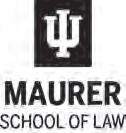

By Addison Jacoby agjacoby@iu.edu
From “The Cameraman” to “Zootopia,” music has always been used as a tool to convey emotions within movies, almost as a supporting actor in the cast. Whether it’s the classical sound in “The Cameraman” or Shakira’s distinct voice in “Zootopia,” music tells the audience a character may be in danger, in love or simply having a good time.
While I may consume more media than the average person, it always excites me when there’s an artist I don’t recognize in a movie. From one self-proclaimed soundtrack scavenger to another potential scavenger (no certificate needed), here are five songs from movies that found their way onto my playlist:
“Stuck In The Middle With You” from “Reservoir Dogs” Quentin Tarantino’s 1992 directorial debut, “Reservoir Dogs,” is a non-linear heist thriller that brings the audience along for the ride as eight men attempt to piece together which of them is the mole after their attempted jewel heist goes sideways.
Creating the blueprint for the rest of Tarantino’s movies, Mr. Blonde (Michael Madsen), squats by the radio with a straightedge razor in hand, fumbling with the stations while Kirk Baltz’s cop character sits on the other side of the frame tied up in a chair. After Mr. Blonde nods in approval at the song, he slowly begins singing and dancing along to “Stuck In The Middle With You” which creates, arguably, one of the most iconic torture scenes in film.
The 1972 hit by Stealers Wheel used within the brutal scene creates a strong dissonance between the upbeat guitar music and the gory actions of the characters. While “Stuck In The Mid-
dle With You” is a classic hit I knew before seeing “Reservoir Dogs,” this movie is what influenced me to add it to my playlist. Not to dance along in the psychopathic way that Mr. Blonde did, but because I simply enjoyed the upbeat tone and underlying lyricism about the intricacies of the music industry.
“A Real Hero” from “Drive”
Based on James Sallis’ 2005 novel, “Drive” is a 2011 neo-noir thriller that follows an unnamed Hollywood stunt driver by day and getaway driver by night. As the driver grows closer to his next-door neighbor, Irene (Carey Mulligan), and her son Benicio (Kaden Leos), the driver’s motivations begin to change.
When the driver takes Irene and Benicio for a ride, the synthesizers begin in “A Real Hero” by College and The Electric Youth. During the scene, the chorus repeats the lyrics describing “a real human being and a real hero,” as the driver experiences the beauty of familial life and silently decides he no longer desires to participate in his life of crime.
The phrase repeated throughout the chorus of the song is emblematic of the driver’s character arc throughout the film, becoming a “real human being” by showcasing more emotion as the story progresses and a “real hero” as his motivations for crime become selfless.
With the synthesizers, haunting vocals and the depth of the lyricism in the 2010 song, “A Real Hero” was added to my playlist almost immediately after watching the movie.
“Hinnom, TX” from “Warm Bodies”
Set in a post-apocalyptic world run by zombies, “Warm Bodies” is a 2013 movie that brings Isaac Marion’s 2010 paranormal romance novel to life. The story follows Nicholas Hoult


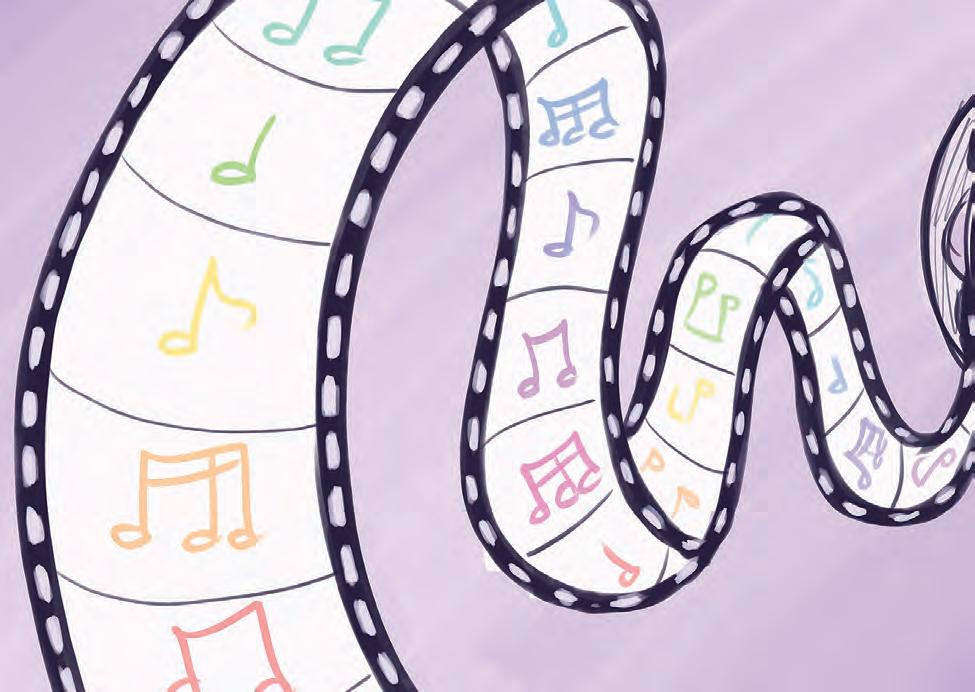
playing R, a young zombie who possesses introspective thoughts that allow him to question his identity as a zombie and existence. Eventually, he falls in love with a human girl.
Driving through the rain, hoping to reach the small refuge town of humans who have survived the zombie apocalypse, “Hinnom, TX” by Bon Iver hums in the background of the transformative scene that showcases R’s developing humanity.
“Hinnom, TX” is a song meant to be felt, containing vague, mystical lyrics inviting listeners to question how personal experiences change the collective experience. Connecting to R’s introspection, “Hinnom, TX” reflects R’s feelings about his place within the postapocalyptic world he lives in.
With the soft tones of the 2011 song and poetic lyricism by Iver, “Hinnom, TX” raced its way into one of my calm, relaxing playlists.


“Uncle ACE” from “Challengers”
“Challengers” is a 2024 romantic sports comedy film, following three tennis players from their college years to their early 30s as they explore their tumultuous relationship influenced by ambition, jealousy and passion.
“Uncle ACE” plays during a turning point in the film. In this scene, Zendaya’s character takes advantage of the two boys’ competition for her affection. Dancing through the background of the scene, “Uncle ACE” slowly gets louder as passions rise, culminating in the climax of the scene and leaving audiences in shock as the next scene quickly arrives, cutting to a tennis match.
The 2013 song begins with tambourines and guitar, then, intense saxophones take over. “Uncle ACE” has reframed my playlists entirely, introducing me to the large discography
of Devonté Hynes and his two aliases, Blood Orange and Lightspeed Champion.
“Mystical Magical” from “Karate Kid: Legends”
“Karate Kid: Legends,” released in May 2025, is the sixth film in the “Karate Kid” franchise, following a kung fu prodigy who is new to New York City, but begins to be bullied by a local karate champion. Wanting to be able to defend himself, he begins taking karate lessons with well-known characters from the franchise, like Daniel LaRusso (Ralph Macchio).
During a karate training sequence, newly-released song “Mystical Magical” by Benson Boone begins its synthesizer beat, creating an upbeat and comedic scene. “Mystical Magical” does not really have any emotional ties to the movie, but I think the song was a fun choice. Boone and “Mystical Magical” has gotten a lot of hate online, and, while I



agree the song is meaningless, I still think it is a fun pop song. So, yes, I do have “Mystical Magical” on one of my playlists, as well as Boone’s “Mr Electric Blue.” These songs are fun! Not every piece of art needs a deep meaning or underlying introspection; sometimes, guilty pleasure music is okay. Film is a great way to showcase the human condition, and I think music is too. Music is something so uniquely human that there is no possible way to showcase the human condition without it. While some songs and movies are deep and introspective, others are fun and create a temporary escape with upbeat comedy. These are just a few examples of music that’s found itself in my playlist after a movie, but I recommend giving all of these a listen and a watch. The next time you hear a song in a movie you like, check it out!





By Steven Leatherwood
sjleathe@iu.edu
The “Fall of Freedom: Fighting Fascism Through Art” exhibition is coming to Bloomington this weekend.
It’ll host more than 40 art pieces from eight local artists, all united by the goal of thwarting fascism in the United States.
It’ll run from 5-10 p.m.
Nov. 21 and 1-9 p.m. Nov. 22 at 714 W. Kirkwood Ave.
Along with showcasing art pieces like sculptures, paintings and ceramics, the event will also feature live music by Travers Marks, who owns Max’s Place. Attendees will also be able to make protest posters. Materials will be available at the exhibit, and signs can be added to the event’s “Wall of Dissent.”
Homemade snack foods and beverages such as beer, wine and water will also be provided. There is no cost of
“The strongest thing we can do is build bonds with one another and find common cause and find common goals and find common language and find common expression.”
Lance Pruitt, Indiana artist
admission, but the organizers will be accepting donations and selling some of the artwork, with all proceeds going to Community Kitchen of Monroe County, a nonprofit food kitchen that helps those without food security.
Paul Pruitt, the main coordinator and one of the artists participating in the showcase, will display several sculptural pieces made with “found objects.”
“One is made from old paint can lids, and two more are made with corn and another is made with old wood,” Paul said. “Most of our work was inspired by one person right now, Donald Trump.”
Paul said many of his pieces represent the current
climate of the United States. He’s also focused on the struggles of local farmers, who are losing revenue on corn, wheat and soybeans, and immigrants targeted by presidential executive orders this year.
Another artist, Bert Gilbert, is showcasing a large sculpture piece called “Fear From The Left And Fear From The Right.”
“I made it a few years ago when I suddenly realized that fear was being used as a political tool,” Gilbert said. “Fear makes you constantly conscious of your periphery and pushes all your attention to the things around you.”
Lance Pruitt, Paul’s son, will present his artwork at
the event, as well. Lance has a background in sculpture and woodworking and will display several sculptures at the event. He has created a text-based piece that combines walnut woodworking with carved text using computer numerical control, which is computer assisted woodworking.
The artists all said creating an open space for art in a time of political strife is integral to fighting fascism, those who oppose freedom of expression through art and the current administration.
“I think this is a wonderful way for us to get together and to maybe provide a voice for outrage across the community,” Gilbert said.
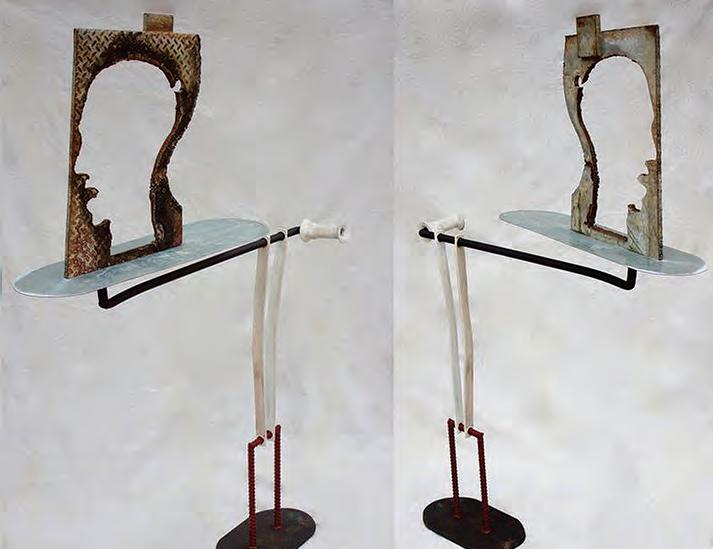
Lance said it’s important for the community to show up for this event to make a powerful statement against the government. He said coming together as a group is one of the greatest resistances a community can muster.
“One of the key, kind of, tenants of fascism is isolation,” Lance said. “The strongest thing we can do is build bonds with one another and find common cause and find common goals and find common language and find common expression.”
By Sophie Albert soalbert@iu.edu
The annual “Potpourri:
An African American Performance Showcase” put on by IU’s African American Arts Institute returned to the IU Auditorium Nov. 15 after taking a year off to celebrate its 50th anniversary.
The event brought together the three ensembles that make up the AAAI, the African American Dance Company, the African American Choral Ensemble and IU Soul Revue, in a showcase of African American performing arts.
Raymond Wise, the executive director of the institute and director of the choral ensemble, said “Potpourri” was created about 30 years after the three ensembles formed. It serves as a way for the ensembles to showcase what members have learned and worked on, and to engage with the wider
Bloomington community.
Wise said the point of this event, especially in today’s political climate, is to bring people from all backgrounds together to celebrate and uplift Black art and culture.
“We don’t understand one another, we continually fight and we go against one another because we don’t spend time together, because we don’t interact, and that’s the one thing that is so exciting about our ensembles,” Wise said. “People come from all cultures, all ethnicities, all backgrounds and together they come together to do their best work and provide wonderful excellent performances for the community.”
Wise opened the evening discussing AAAI and its history, highlighting the vision of Herman Hudson, the vice chancellor for AfroAmerican affairs at IU in the early 1970s, who helped
create the institute. Wise urged audience members to support them in whatever way possible, saying the dismantling of DEI initiatives at IU has cut much of AAAI’s funding.
After Wise’s speech, the show began with a performance from the dance company. They opened their set with an ode to the 1970s, in honor of when AADC was created. Groovy, lively dancing filled the stage as dancers leapt around and shimmied about to “Once You Get Started” by Chaka Khan and Rufus.
They then transitioned into more traditional African dance with a contemporary version of a diansa dance accompanied by live percussionists. The crowd began cheering along.
The performance lasted about 35 minutes and was followed by the AACE, who began with a classic choral sound, performing “I’ll

Stand,” written by Wise. The group then sang “Lift Every Voice and Sing,” widely considered the Black national anthem, in honor of its 125year anniversary. They had the audience stand and sing along, so everyone became a part of the show.
Afterward, they moved into gospel songs that got the crowd standing, dancing, clapping and singing along. These songs shared uplifting messages of living every day to its fullest, coming together to share compassion and being the change you want to see in the world.
Bloomington resident Angela Carter said the choral ensemble set was her favorite part of the show. I thought it was awesome,” Carter said. “A lot of fun, a lot of energy.”
The show closed out with an electric performance from IU Soul Revue. They made a grand entrance with
flashing lights, shiny outfits and a magnetic stage presence. They performed several contemporary and R&B songs including “On Our Own” by Bobby Brown, “Together Again” by Janet Jackson and, a fan favorite, “Poison” by Bell Biv Devoe that got the audience singing and dancing along. The energy IU Soul Revue brought to the stage turned the auditorium into a party, giving the audience members a chance to let loose and have a good time. All the performers’ vocals were lively and smooth, and the accompanying band brought the songs to life, adding to the enthusiasm of the performance. They closed out the night with a rendition of “O-o-h Child” by The Five Stairsteps, and were joined by the other ensembles. The audience participated by holding up their phone lights and swaying along.
IU Soul Review was their favorite part of the night, enjoying how they were able to get the crowd involved with the performance. They thought the show as a whole was a great way to bring people together and empower them.
“I thought it was really powerful,” Momoh said. “It had a really important message. I thought that they conveyed it in a really nice way that is open to everyone.”
Obungu agreed with Momoh, recommending that more people go see the show in the future.
“It was very, like, empowering, especially as a Black student,” Obungu said. “To just kind of be, like, surrounded by all sorts of Black music, Black culture; highly recommend it. A million out of ten experience, I can’t wait for next year.”



By Lexi Bunting lexbunti@iu.edu
Has daylight saving time thrown off your rhythm? Are you feeling a little gloomier now that the sun sets before dinner? You’re not the only one.
Seasonal Affective Disorder (SAD) is a type of depression linked to the changing seasons, often appearing as the days grow shorter and colder. Symptoms can include low energy, changes in sleep or appetite and a general sadness as winter sets in. For students, this time of year can be especially challenging due to academic demands ramping up for finals.
Fortunately, there are numerous creative outlets that can help fight the winter blues. Here are some ideas to help offset the gloom of winter.
Journal your thoughts
Putting your thoughts on paper can be a great way to wind down after a long day. Journaling can help with emotional processing while creating a stable daily routine.
One specific type of journaling that can help lift your mood is gratitudebased journaling.
Simply writing down three things each day that you’re grateful for, or that made you smile, can help change the perspective on

any day. In an article from Harvard Health Publishing, Maureen Salamon writes that gratitude has “positive health effects, including greater emotional and social well-being, better sleep quality, lower depression risks and favorable markers of cardiovascular health.”
Attend a comedy show
Sometimes, all we need is a good laugh. Laughing helps stimulate your organs by enhancing your oxygen intake, helping your lungs and heart produce endorphins that will go to your brain.
Those endorphins help cool down your stress response, reducing physical and mental systems.
Bloomington offers plenty of opportunities for a good laugh through its many comedy groups and venues. The Comedy Attic and the Buskirk-Chumley Theater frequently host professional comedians, while student-run troupes like Boy in the Bubble, Full Frontal Comedy and Backdoor Comedy bring laughter directly to IU’s campus.
Dance it out
Sometimes the best
thing you can do is to dance it out. Much like laughter, dancing releases feel-good chemicals such as dopamine and endorphins. You don’t need fancy choreography, just move some furniture and your favorite beat. If you’d rather not dance alone, try a group class, which is a great way to get out of the house and connect with others. The Student Recreational Sports Center even offers weekly dance fitness classes, which are free for students with their CrimsonCard and the perfect way to add some
movement and joy to your routine this winter.
Wear something that makes you feel good I always feel better when I’m wearing something I really like. Choosing to wear clothes that you love can help set a positive intention for the rest of your day. The old saying “look good, feel good” rings true especially when the changing seasons start to get you down. No matter what your style is, being intentional with your clothing can be the perfect way to make a winter day feel less dull.
By sprucing up your winter outfits with playful accessories or finding unique ways to layer, you’re staying warm and fashionable. Sometimes all it takes to boost your mood is a new style.
Take up a new hobby
Keeping your mind active can help you stay inspired all season long, and picking up a new hobby is the perfect way to get those creative juices flowing.
Choosing something you’re genuinely interested in or have always wanted to try is a great start. Activities like painting, crocheting or learning a new instrument can help relieve stress and can leave you feeling more productive.
For those looking to try something new, the Monroe County Public Library offers free programs for all ages, from beginner to advanced levels, in a wide range of creative activities. You can also check Visit Bloomington for local art and music events happening throughout the community on a weekly basis. Winter can be tough, but it doesn’t have to be miserable. With a few intentional choices, you can offset the blues that come with the season. Finding humor, staying active and exploring creative outlets are simple ways to keep your spirits high until spring.
By Emily Shannon emmshann@iu.edu
Prior to watching the World War II film, “Nuremberg,” after its debut on Nov. 7, I had expected either a boring, accurate and historical recounting or a sickeningly over-dramatized retelling of the famous Nuremberg trials.
Instead, the film’s dark premise and incredible actors retold a fairly accurate story of the trials, where 24 individuals and six organizations associated with the Nazi regime were indicted. After the trials, 22 individuals were initially brought in front of an International Military Tribunal to be judged on counts of war crimes, crimes against humanity, conspiracy and crimes against peace.
With muted colors, barren landscapes and dramatic music, the world leaders, prosecutors and civilians’ tension and fear were palpable. Director and writer James Vanderbilt drew from award-winning author Jack El-Hai’s book about the relationship between the Reichsmarschall and a psychiatrist.
While some aspects of their relationship and pivotal events were embellished for the film, the story described the pair’s lesser-known story about their interactions.
Amid the war-torn land, this twisted pairing toyed at the comparison between good and evil, loyalty and friendship and revenge and decency. It questioned
whether WWII could be followed by a third world war, and it posited that other nations and individuals are capable of heinous acts.
Though Vanderbilt first began drafting “Nuremberg” 13 years ago, the film’s messages and the characters’ ethical dilemmas still coincide with those experienced today.
“Nuremberg” opened with exposition and the surrender of Reichsmarschall Hermann Göring (Russell Crowe), followed by the introduction of Dr. Douglas M. Kelley (Rami Malek), the main character and psychiatrist assigned to evaluate the Nuremberg defendants.
Supreme Court Justice and prosecutor Robert H. Jackson (Michael Shannon), German to English translator Howie Triest (Leo Woodall) and several Nazi leaders were quickly introduced. As individuals were woven into the story, the Allied Forces’ hope for conviction and the defendants’ pompous attitudes toward acquittal created questions about the future of the Nazi Party’s ideology and its potential to receive a positive reception on the world stage.
Throughout the film, Kelley’s obsession to make a name for himself and write a book about his patients clashed with his apparent connection to Hermann Göring — a loving father, dedicated husband and Nazi leader.
As the trial drew near,
and Kelley and Göring’s relationship teetered between professional and personal, Kelley’s determination to understand the psychological differences between Nazis and average people began to falter.
Like the humanity found in characters in Erich Maria Remarque’s book, “All Quiet on the Western Front,” the psychiatrist started to realize that Göring shared similarities with ordinary people and their better qualities. Perhaps those normal individuals also shared some of his evil tendencies.
The audience could experience Kelley’s realizations too. After agreeing to deliver Göring’s letters to his child and wife, the psychiatrist hears the daughter play the piano and realizes that she loves her father and entertains her with magic tricks. Though her father committed unspeakable acts, she and her mother remain faithful to him and his image and enjoy receiving his letters.
His family’s response to his imprisonment makes him seem more human and less like a foreign monster.
As Göring’s character was fleshed out, I wondered how he could waver between being a “family man” and a war criminal. He and other characters alternated between committing empathetic and self-serving acts, making me question the innate nature of humanity.
Yet, as the tension built

up, and the connection between doctor and patient intensified, sizzled and blackened, Vanderbilt added a symbol of caution that more clearly emphasized the film’s purpose. He warned the general public to remain vigilant and reminded people of the dangerous behaviors that have been rationalized in the past.
With the trials on the horizon, Triest implies that the war has not ended. He later reveals to Kelley that he will not enjoy a cigarette until after the war ends; the au-
dience is left pondering the possible foreshadowing behind his ominous statement.
After the tribunal’s verdict, Triest withdraws one of his cigarettes. Yet, he never brings it to his lips and breathes in.
During those moments, his refusal seemed to symbolize that the evils seen during WWII were not isolated instances, and humanity still holds an affinity toward self-serving behavior.
Vanderbilt’s ability to portray a sense of looming doom and healthy fear
separates the film as an applicable lesson in history, rather than simply a historical piece. The film showed death and suffering, involved many well-developed characters, emphasized past misdeeds and blackmail and solidified the history of the Nuremberg trials. Throughout it all, Vanderbilt’s powerful message to humanity became clear: humans are multifaceted and capable of horrendous acts, and without intervention, history often repeats.
By Stella Klaus ssklaus@iu.edu
Spyridon Stratigos, 77, has lived in Bloomington for nearly six decades and has acted since the ‘80s. But Nov. 14 was his first time acting on stage in a decade. He acted in the first play in a series of one-acts at the Constellation Playhouse, hosted by the collective Fourth Wall.
Stratigos, known to many as Strats, acted in “A Blooming of Ivy,” playing a widow trying to find love again. Being a widower himself, Strats was in familiar territory.
“When I first read it I thought, ‘what a nice little simple play,’” Stratigos said.
“It wasn’t that simple because there’s a lot of changes of moods, you know, there’s the nervousness and then the funniness of getting more confidence as the play evolves.”
With lots of positive feedback, even immediately after the play, the packed house seemed to appreci-
ate the show. The frequent laughter and reactions from the crowd confirmed to Stratigos that the show went well.
“There’s nothing like a live audience, I mean seriously it’s just, every night is different and I’m very fortunate to be a part of it,” Stratigos said. “I thought it was a really fun little show. I mean it was short, sweet and funny.”
Fourth Wall founder and one of the producers of the event, Emelie Flower, didn’t know what to expect in terms of turnout as it was the company’s first event. The show, however, ended up being completely full. With around 95 attendees, every seat of the theater was filled, with extra seats added for audience members. They turned about 10 people away after reaching capacity.
Flower said Fourth Wall stemmed from years of talking and thinking about starting a group for like-minded artists with her friend Kate Braun, one of the other
founders.
“We had ideas sitting at the kitchen counter and they were just ideas and then like about six months ago we finally said, ‘You know, let’s just do it,’” Flower said. “We had no idea how to do it or what we were doing and we’ve kind of just learned as we’ve gone.”
The event included three one-act plays of different lengths tackling themes of aging, family and faith. The first one, which Stratigos acted in, followed an older woman and a man, who are both widows. In the play, the man confesses his love for the woman and they spend the rest of their time on stage discussing growing old and moving on with someone new. The second play showed three siblings in a “dysfunctional” family as they learn to show their affection for one another.
The final, and longest, of the three plays told the story of a wife and husband, who had just had an accident that confined him to a wheel-
chair, discussing the idea of growing “old and mean,” among other things like questioning your faith.
All of the plays at Nov. 14’s event included volunteer actors. Flower said the group had worked with or seen many of the actors before, but they all came from different backgrounds with different experience levels.
“A big thing with this is we do have a lot of roles that are a little bit older, I think that’s kind of a hard thing for a lot of local actors who are above a certain age,” Flower said. “A lot of these stories do talk about aging or there’s older adult siblings, or there’s finding love again after being widowed or questioning your faith. So, there’s a lot of opportunity for actors who might not have roles elsewhere.”
With a goal of bringing people together and providing more opportunities for local theater, Fourth Wall aims to highlight talented screenwriters and local actors.
Even though many of the actors were local and came from different levels of experience, many of the attendees had experience in the film or theater industry.
“I mean this has been my life, you know, I’ve made movies since I went to film school at USC, you know, many many years ago, so I’m a great believer in the craft,” Angelo Pizzo, Bloomington filmmaker and producer of “Hoosiers” said. “There’s just not enough spaces, there’s not enough opportunities for people to even make a living at it, especially in Bloomington, Indiana, and especially in the state of Indiana.” Pizzo, along with many other attendees, was drawn to the event due to his connections with those involved in the show and the opportunity for people to show off their work to the community. Especially in Bloomington, he believes there should be more opportunities for performers.
Jeff Freemas, 76, who
came from Indianapolis to watch the show and support Stratigos, shared Pizzo’s sentiment. He admires the opportunities Fourth Wall offered local actors, writers and performers in Bloomington and emphasized the need for art in our society.
“Arts are always what leads culture and society,” Freemas said. “We need the arts even more now than ever.”
Freemas, who lived in Bloomington from 1967 to 1983, said there wasn’t anything like this when he lived here, and he enjoyed being able to see people’s work. He attended the show with his wife, Bonnie Maurer, who is a poet and artist and got a Master of Fine Arts degree in poetry from IU. “Well, all three (plays) were provocative, I think,” Maurer said. “They brought up issues to think about later, not only while you’re watching, but to contemplate when you think back on what you saw and experienced by the actors.”
By Nathan Shriberg naashri@iu.edu | @nshriberg
As he has in all of Indiana’s games thus far, head coach Darian DeVries turned to senior forward Sam Alexis as one of his first subs off the bench. Shortly after checking in, Alexis slammed home an emphatic dunk that set the tone for his team-leading offensive effort in the Hoosiers’ 69-61 win against the University of the Incarnate Word on Nov. 16 inside Simon Skjodt Assembly Hall in Bloomington. In the first half, Indiana’s most prolific scorers so far — redshirt senior forward Tucker DeVries and fifthyear senior guard Lamar Wilkerson — combined for only 9 points on 3-for-9 shooting.
As a team, the Hoosiers struggled from beyond the arc, only connecting on three of 13 attempts from long distance in the first half. It was the fewest triples Indiana has hit in any half this season. Until they hit just two in the final 20 minutes.
Despite shooting woes, Indiana was able to build a 16-point lead before halftime. And the effort was largely thanks to the interior presence of Alexis.
“Without him we weren’t winning that game today.”
Tucker DeVries, senior forward
A second chance bucket from Alexis at the 12:43 mark of the first half kicked off a 20-2 Indiana run that lasted nearly eight and a half minutes. During the spurt, Alexis had 9 points and added two more dunks. Alexis ended

the half with a game-high 13 points.
“When you got guys like Lamar (Wilkerson) and Tuck (Tucker DeVries), other guys on our team that can shoot it so well it gives me opportunities to just slip and get easy wide open dunks,” Alexis said postgame.
Alexis’ buckets came almost exclusively from right underneath the basket, showcasing his skill in the two-man game, particularly with sixth-year senior guard Tayton Conerway, who racked up seven assists on the night.
“Without him we weren’t
winning that game today,”
Tucker DeVries said postgame. “He was a beast down low and that’s probably where it starts. As our guards and wings we got to get downhill more and get to the free throw line and then get our rhythm in that.”
Alexis might not operate like a guard or a wing, but throughout the game he displayed his ability to get to the free throw line. As a strong presence in the paint and a threat to dunk the ball, Alexis consistently found ways to get to the basket and attract contact from the defense.
But converting oppor-


tunities at the charity stripe proved to be a challenge for the Hoosiers — one that carried over from the last game. Alexis ended the game 6-8 at the free throw line. In its first two games of the season, Indiana shot 36 for 40 from the line. Against the University of WisconsinMilwaukee, the Hoosiers shot 19 for 27. And against Incarnate Word, Indiana made 18 of 26. In their second two-game stretch of the season, the Hoosiers shot 69.8% from the line, down from 90% in the first two contests. Alexis’ 75% was ahead of the curve.
But as Indiana’s struggles from beyond the arc continued in the second half, Alexis began to cool off. He finished the game with 16 points, adding just 3 in the second frame. While he didn’t have as big an impact on the scoreboard in the second half, Alexis’ effort led the team, making him the fourth different highest-scoring player the Hoosiers have had this season.
“Sam is playing great. He was one of the guys tonight that really brought some good energy, some good physicality,” Darian DeVries said postgame. “I thought he was terrific. I thought he had a really good night.” The halftime lead Alexis spearheaded proved to be just enough to hang on for the victory. Incarnate Word cut the lead to five in the closing minutes, but Indiana was able to seal the win with a key defensive stop and clutch free throws. In addition to leading the team in scoring, Alexis added eight rebounds and a block. The Hoosiers will look to reestablish their shooting prowess against Lindenwood University at 6 p.m. Nov. 20 inside Simon Skjodt Assembly Hall in Bloomington.
By Savannah Slone srslone@iu.edu | @savrivers06
Indiana women’s basketball is a squad full of new players to the program. It has six transfers and two freshmen with just five returning players. And of those five returning players, just one saw more than four minutes per contest last season.
The inexperience as a group has shown through the first four games of the season. After a dominant 80-46 victory over Lipscomb University on Nov. 4, the Hoosiers had lackluster performances against the University of Illinois Chicago on Nov. 7 and Marshall University on Nov. 11.
Against UIC, Indiana
trailed by 7 points at halftime before a 25-point second half performance from senior guard Shay Ciezki powered the Hoosiers to a 16-point win. Indiana struggled to score and produced 28 turnovers in its contest against Marshall but squeezed out a 57-51 win. Indiana head coach Teri Moren saw it as an opportunity to have a conversation with her team about the standards held at her program and what is expected from her players come game time and game prep.
“I had a pretty in-depth clarity — role clarity — meeting with them,” Moren said in a press conference Nov. 16.
“And I think it was good for them to hear like what we as coaches are expect-
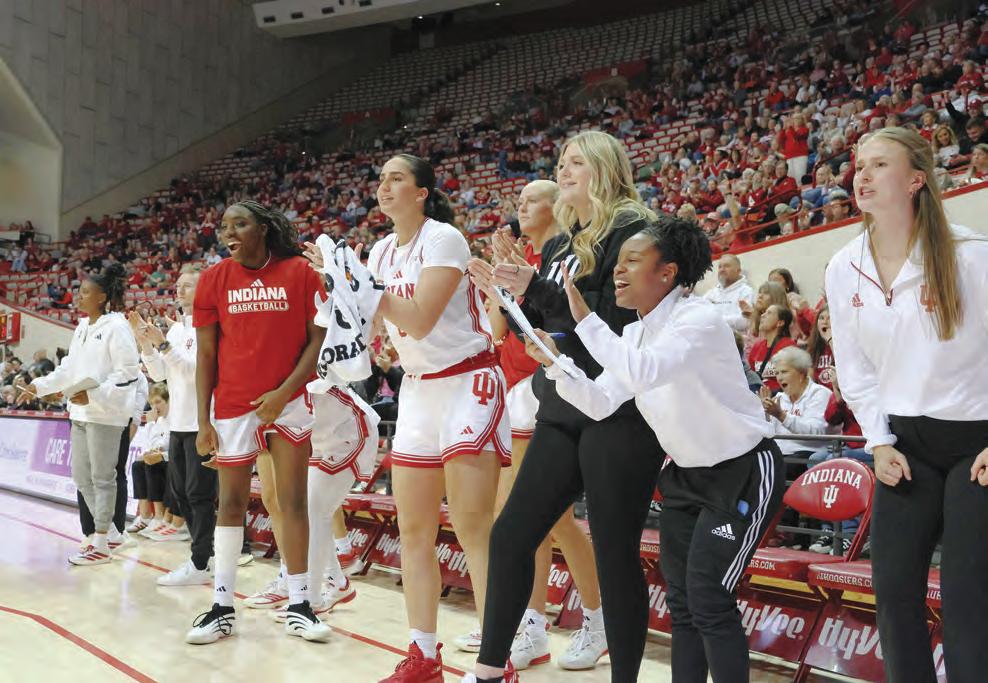
ing and what we’re wanting from them and needing from them in order for this thing to work the way we want it.”
The reality check for Moren’s squad worked, as it notched its first win over a power-conference school this season. The Hoosiers defeated Florida State University 76-72 on Nov. 16 at the Donald L. Tucker Civic Center in
Tallahassee, Florida. Indiana saw all-around scoring impact from players on its roster. Redshirt sophomore guard Lenée Beaumont and senior guard Shay Ciezki recorded 23 and 22 points, respectively. Sophomore forward Zania Socka-Nguemen had her third double-double of the season with 11 points and 13 rebounds.
The more balanced impacts from the roster were needed for Indiana. Three Hoosiers fouled out of the contest against the Seminoles — Ciezki, junior forward Edessa Noyan and sophomore guard Phoenix Stotijn — while freshman guard Nevaeh Caffey picked up four fouls. The foul trouble limited Indiana’s depth and forced
Moren to reach deeper into her bench than she has in games past, which Moren said in hindsight might have been a positive for her team. Senior guard Jerni Kiaku played six minutes of the contest. While the Duquesne University transfer just took one shot from the field, it was an important one. She made a layup with 15 seconds left in the game to give
Indiana a 4-point lead over Florida State, which sealed the win for the Hoosiers.
Despite the wins over UIC and Marshall, Indiana was still disappointed in the performances it put out, Moren said, even “embarrassed” with how the turnover battle went for the Hoosiers. However, Moren appreciated the way Indiana responded to the message earlier in the week and “took that to heart.” It showed in the increased opportunities taken by other players and the 13 turnovers the Hoosiers committed against the Seminoles. And Moren recognized it’s a different environment and playing style for most of the players on her squad who are still learning what playing for Indiana looks like.
Nov. 16’s win showed promise for the new-look Indiana roster starting to gain familiarity with the program and the players on the team. While two returners — Ciezki and Beaumont — led the Hoosiers in scoring, the production from others was a sign of life after two-straight quiet performances.
“This is new for a lot of them,” Moren said. “Some of them have never prepped like this. You know, this, we’re a big, we take a lot of pride in those scouting reports and making sure our kids, you know, feel very comfortable about the scouting report, so still got a lot of work to do, still got a lot of work to do.”
By Elakai Anela
The Hoosiers have a first-round bye before hosting the second-round match at home
No. 25 Indiana men’s soccer will continue its quest for its ninth NCAA Championship, starting in the second
round of the NCAA Tournament after earning the No. 6 national seed and therefore a bye in the first round. The Hoosiers finished the regular season with an overall record of 12-5-1 (5-
5-0 Big Ten). However, with their Rating Percentage Index ranking being No. 10 in the country, the committee opted to slot them higher in the postseason field. Indiana is led by senior
forward Palmer Ault, who is tied for second in the nation in goals scored with 16. Indiana will play the winner of the first-round match between the University of Kentucky and Saint Louis
University at noon Nov. 23 at Bill Armstrong Stadium in Bloomington. The Hoosiers played against both teams earlier this year. Indiana beat thenNo. 15 Saint Louis 1-0 on
Sept. 3 led by a goal from junior forward Collins Oduro. It beat then-No. 25 Kentucky 2-1 on Oct. 14 with a strong effort by freshman goalkeeper Judewellin Michel and a brace netted by Ault.
By Dalton James jamesdm@iu.edu | @daltonomjames
During his second season as head coach for Indiana University of Pennsylvania’s football program, Curt Cignetti learned a lesson he’s held with him since.
After leading the Crimson Hawks to a 7-3 record in his first season in 2011, his squad began 2012 with two wins. Ranked No. 17 in the country, IUP hosted Lock Haven University, which entered the contest on a 44game losing streak.
But Cignetti’s Crimson Hawks entered halftime with just a 7-0 advantage. Inside the Miller Stadium locker room Sept. 15, 2012, Cignetti developed an approach to delivering a halftime message after a mistake-filled first half.
Tell everyone to take a deep breath. To relax. To have fun. And to play the game one play at a time. It worked that day, as IUP won 42-0. Cignetti claims it’s always worked.
So, when Indiana entered its locker room at halftime Nov. 15 inside Memorial Stadium in Bloomington with just a 3-point advantage over Wisconsin, now Indiana football head coach Cignetti didn’t veer from his standard — even after the “lethargic” half.
In turn, the Hoosiers responded with a “good” half, as they earned a 31-7 win over Wisconsin to improve to 11-0 for the first time in program history.
The Badgers began the game with a lengthy drive that chewed up nearly half the first quarter, but they missed a field goal. The Hoosiers then responded with a touchdown drive, as redshirt junior quarterback Fernando Mendoza found sophomore receiver Charlie Becker for a 31-yard touchdown.
But Indiana’s offense sputtered. Two punts followed. Then, Wisconsin scored its own touchdown to knot the game at 7. Red-
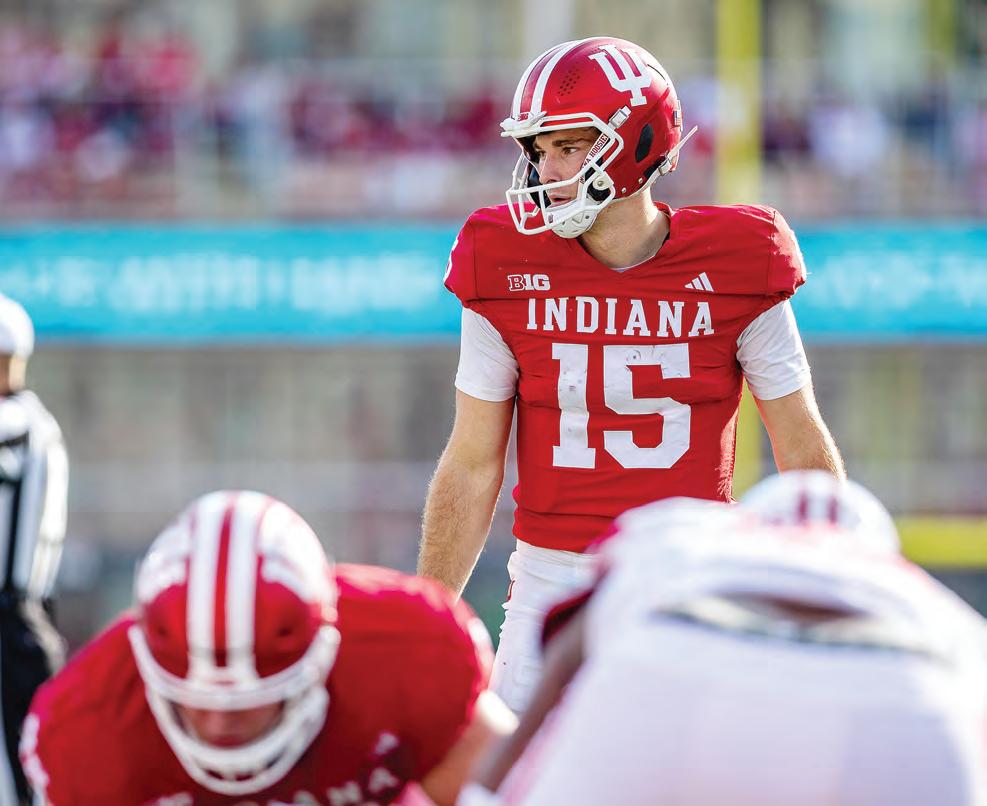
shirt sophomore kicker Nico Radicic tacked on a 37-yard field goal just before half, as the Hoosiers led by 3.
And that’s when Cignetti’s tried and true took over.
Coach Cignetti is a fantastic coach, and he understands his players and his team,” Mendoza said postgame. “And he knows that we were a little lethargic, and we weren’t playing our Indiana brand of football, especially offensively. So, he took us into halftime, told us to take a deep breath, to have fun, play football.”
The Hoosiers did just what Cignetti wanted. They scored 21 second-half points and allowed just 23 total yards across the final 30 minutes. Indiana wasn’t in an un-
familiar position, however. Over the past two contests, the Cream and Crimson struggled in the first quarter against Maryland on Nov. 1, as it led by just 4 points after 15 minutes.
The Hoosiers responded with 13 points in the second quarter before eventually earning a 45-point victory.
Indiana found itself in an even more precarious situation last week versus Penn State. It trailed by 4 points with just under two minutes remaining, until Mendoza delivered a Heisman Trophy-level game-winning drive.
The Hoosiers have made necessary adjustments throughout several games this season to avoid losses. Mendoza and the offense
bounced back against Iowa, then-No. 3 Oregon, Maryland and Penn State.
But Nov. 15, senior linebacker Aiden Fisher felt Indiana just started the game flat.”
“We didn’t have a lot of energy,” Fisher said. “Some guys weren’t ready to go, and I will take the blame for that. I don’t think I was ready to go. I think I could’ve had more energy and been more of a sparkplug for the team.”
Still, the Hoosiers made the necessary changes.
“I think that we’re a great team at adjusting to whatever mistakes we made in the first half and how to improve on those in the second half,” Mendoza said. “And I think that really shows, the coach-
ing really shows, especially in those first drives of the second half.”
It did against the Badgers. Mendoza orchestrated a nine-play, 75-yard touchdown drive to open the third quarter, as he connected with senior tight end Holden Staes for a 2-yard score.
In all, Mendoza went a perfect 11 for 11 for 160 yards passing and three touchdowns in the second half. Mendoza’s fourth and final passing touchdown of the day surpassed former Indiana quarterback Kurtis Rourke for the most in a single season with 30.
“He’s come such a long way since we got him from Cal (University of California, Berkeley),” Cignetti said.
“But I still think that he’s barely scratched the surface of his potential. I think that much of him.”
Cignetti said Mendoza has dedicated himself to the process of improvement since his arrival in Bloomington. First-year quarterbacks coach Chandler Whitmer has also accelerated Mendoza’s development, Cignetti said. But Mendoza, who’s not one to take credit for his success, continued in his ways inside the weight room at the north end of Memorial Stadium. I mean, that’s not a player stat,” Mendoza said. “It’s more of a team and passing stat. I mean, think about all the receivers that we’ve spread the ball out to.”
Cignetti also said it’s not an accomplishment that happens “by yourself.” Still, Mendoza showed poise Nov. 15 in Cignetti’s eyes.
But so did the Hoosiers — and it stemmed from Cignetti’s halftime approach.
Becker, who led the Cream and Crimson in receiving with five catches for 108 yards and a touchdown, said it’s “really good” to know the head coach still believes in his players despite their mistakes.
Cignetti got the Hoosiers back down to earth, Becker said.
It resulted in a dominant victory — Cignetti’s 22nd at the helm and 15th inside Memorial Stadium. The Hoosiers still haven’t lost at home under Cignetti.
Although Cignetti said the home fans provide at least a 14-point advantage in Bloomington, the Cream and Crimson “hope” Nov. 15 was their final home contest of the season. Indiana has its eyes set on a first-round bye in the College Football Playoff.
And those hopes still remain a strong possibility, thanks to Cignetti’s patented halftime approach: deep breaths, calmness and having fun one play at a time.


By Dalton James jamesdm@iu.edu | @daltonmjames
Tucker DeVries sat down with a box score and a water bottle filled with yellow liquid in his right hand. He placed the two on the Indiana-branded wooden table.
Then, the redshirt senior forward wiped his face with his right hand as if he was relieved to escape with a win — a feeling he and his teammates hadn’t previously endured this season.
And it all came after Indiana men’s basketball improved to 4-0 with a narrow 69-61 victory Nov. 16 over the University of Incarnate Word inside Simon Skjodt Assembly Hall.
“I know it didn’t look pretty, but that’s part of growing,” Tucker DeVries said postgame. “I think there is a lot we can take away from that as we look at it tomorrow.”
The Hoosiers struggled early as the Cardinals showed a 1-3-1 zone on de-
fense, which Indiana head coach Darian DeVries said took the Cream and Crimson out of their usual rhythm. In turn, his squad was stagnant offensively.
Incarnate Word then went to a typical man-toman defense and Indiana took advantage. The Hoosiers went on a 20-2 run in just over seven minutes. It seemed they would run away with yet another dominant victory.
Although freshman forward Trent Sisley and Tucker DeVries each drilled a 3-pointer during the run, Indiana finished the first half a measly 3 for 13 from beyond the arc. Its second-half performance wasn’t much better.
In total, the Hoosiers went 5 for 24 from deep — a far cry from the 47.5% 3-point clip they entered the game shooting. They shot just 43.4% from the field compared to 56% in the first three games of the season. Despite the Cardinals
pulling within 5 points late in the game, the Hoosiers held on. They found a way to win even with a rather unsatisfactory performance.
“But I think at the end of the day, that’s important, to still find a way to win games when shots aren’t falling,” Tucker DeVries said.
While Indiana held Incarnate Word to 38.3% from the field in the contest, the Cardinals went 54.8% in the second half. The visitors pulled within 5 points late and could’ve inched even closer after Tucker DeVries missed back-to-back free throws with a minute remaining.
Although Cardinals graduate student guard Tahj Staveski hit difficult shots throughout the final minutes of the game, he couldn’t do so in the final minute to truly give his squad a chance at victory.
“I thought early we probably weren’t executing at a high level,” Tucker DeVries said. “I mean, we’ll see after watching it. I thought at
By Quinn Richards qmrichar@iu.edu | @quinn_richa
It’s never easy to say goodbye. The Irish found saying nothing at all was the way to go. I’ve been told a Minnesotan goodbye is a drawn-out conversation about anything — a ritual that can take anywhere from 45 minutes to two hours in its entirety. If you ask me, I think the Spanish language found the sweet spot — adios. It’s short and sweet, rolls off the tongue and has a sense of informality to it that your traditional “goodbye” simply can’t replicate. Indiana football said goodbye to its seniors with poster cutouts of each player’s jersey, a photo opportunity with head coach Curt Cignetti and individual “thank you” messages on the Memorial Stadium screens. Oh, and a 31-7 win over Wisconsin.
Nov. 15’s first half featured four punts and some offensive line play that would make Mike Ditka of the 1985 Chicago Bears contemplate his life. Just before the intermission, redshirt sophomore kicker Nico Radicic converted what felt like the slowest field goal since the Dark Ages, thanks to a head-on wind, to give the Hoosiers a 10-7 lead into the break. In the second half, Indiana remembered it’s now a good football program and scored 21 unanswered points to earn a convincing Senior Day victory against the Badgers. Redshirt junior quarterback Fernando Mendoza left the field to the chants of “Heis-men-doza” after a stat line that resembled my days as a signal caller in fifth grade recess. He completed 22 of his 24 pass attempts for 299 yards and four touchdowns. When the Hoosiers’ final scheduled home game of the season drew to a close, I couldn’t help but think about the other seniors in at-

tendance. The six graduating trombonists in the Marching Hundred, the thousands of crimson-clad students soaking up one last day of football festivities and, sigh, the 11 representatives of Indiana University’s student media senior class who stopped to take a picture on the field after the game. That last one includes me. Look, I’m not one to get sentimental. I promise the dozens of various sporting event credentials littered on top of my dresser ended up there by pure coincidence. But it’s difficult to not let your fickle emotions get the best of you. It’s like watching “Titanic” for the first time; you’re going to tear up. How could you not? Jack, just get on the door, please, I’m begging you.
Even the weather celebrated the seniors’ final sendoff. I checked my phone midway through the third quarter to look at my weather app — a place I often visit to pass the time at social gatherings — and saw it was 70 degrees outside. In the middle of November. It snowed Nov. 10. But for Senior Day, nothing but blue skies, fluffy white clouds and a generous dosage of vitamin D from the warm sun above. After the game, senior linebacker Aiden Fisher walked off the field toward a wall of the Hoosier faithful.

Before heading to the locker room, he tossed his towel to a young fan and paused for a moment to embrace his 15th and final regular season win at Memorial Stadium — a place he’s never lost at.
During the postgame press conference, Fisher was asked about the interaction. He said something that resonated with me.
“I’ve never really been a place-over-people type of person, but this place is special,” Fisher said. “Just jogging off and hearing some of the things they were saying, chants and whatnot, just kind of makes you appreciate it. I don’t think I really do that enough in my life, where I just stop for a second and appreciate things.”
When he said it, I realized it’s something I don’t do enough either. In fact, I’ll make an educated guess that most people fall short of taking time to truly appreciate things in the moment. I’m glad Fisher didn’t make that mistake, as he left the field one final time.
Who knows, there’s still a slim chance Indiana could host a first-round playoff game in Bloomington this December. But for now, Fisher and his senior Hoosier teammates have said goodbye to Memorial Stadium one last time. And I guess, in my own preferred way, I will too. Adios.
the end they hit some tough ones, 15 feet, or kind of the ones that we were trying to give up — not trying to give them up easy ones, but if you’re going to give up a shot, that’s where you want it to be.”
Even though the Cardinals made it difficult, the Hoosiers had to find a way to emerge with a victory.
In the Hoosiers’ first opportunity after three blowout victories, they did. And it’s something the Hoosiers will certainly have to do come conference play. It’s what separates good teams from great ones.
“I thought it was good for us to still pull out in the right way,” Tucker DeVries said.
Indiana’s offense wasn’t clicking. Nor was its defense. Fifth-year senior guard Lamar Wilkerson didn’t connect on any of his three attempts from long range. Tucker DeVries made three of his 13 3-point attempts. However, senior forward Sam Alexis led the Hoo-
siers with 16 points and eight rebounds. Without Alexis, Tucker DeVries said the Cream and Crimson wouldn’t have won.
Still, even for a veteranladen team, the Hoosiers’ energy wasn’t at the level Darian DeVries wanted it to be. He said it’s “fighting human nature” — which Indiana “can’t be.”
“We are missing the shots we normally make,” Darian DeVries said. “You got to continue to fight. In the first half we did.”
Darian DeVries said his squad will look back at the once-substantial advantage it built in the first half because of “really good” defense. But it slipped in the second half, as did the Hoosiers’ energy.
“That energy is something we have to play with,” Darian DeVries said. “We got to be a very spirited, physical, tough-minded group for 40 minutes every night. That’s how we’re going to win.”

By Conor Banks conbanks@iu.edu
Indiana football stayed at No. 2 in the latest College Football Playoff rankings released Nov. 18 — its third consecutive week in the second spot. This seeding projects the Hoosiers to receive a first round bye, before taking on the winner of the matchup between The University of Alabama and Oregon in the quarterfinals. The top three seeds remained unchanged in the latest rankings. Ohio State stayed at No. 1 after its dominant 48-10 victory over UCLA on Nov. 15. Texas A&M University remains at No. 3 in the rankings following its 27-point comeback win against the University of South Carolina on Nov. 15. Meanwhile, Alabama dropped from the No. 4 spot to the No. 10 spot with its loss to then-No. 11 The University of Oklahoma on Nov. 15. The Crimson Tide’s loss propelled the University of Georgia to a No. 4 ranking and into position for a first-round bye if the season ended today. Indiana notched a 31-7 victory over Wisconsin on Nov. 15 to improve to 11-0 on the season — the first
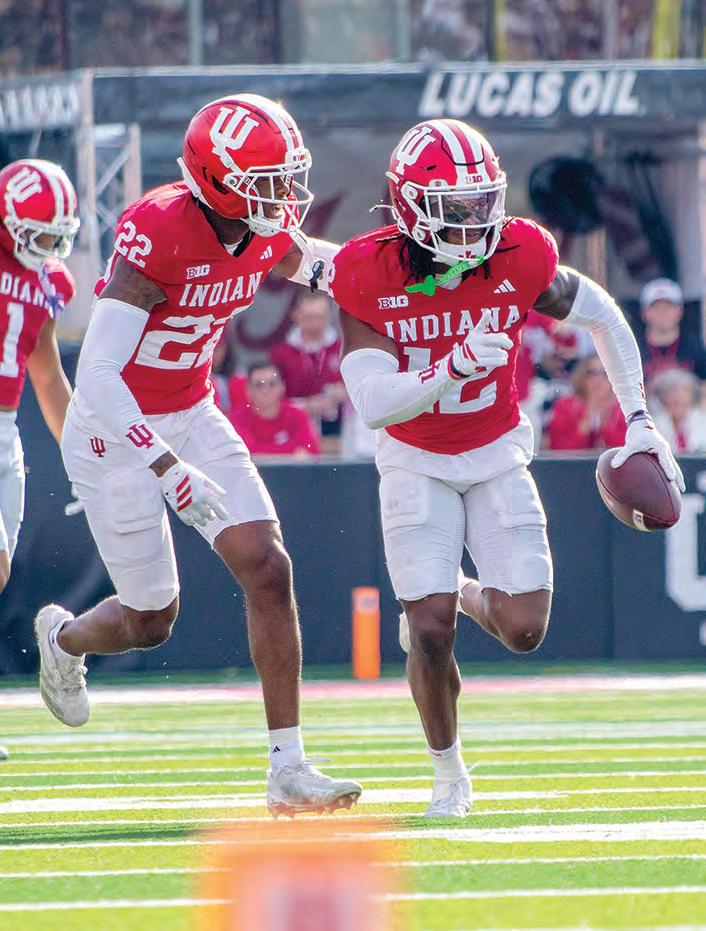
11-0 start in program history. Redshirt junior quarterback Fernando Mendoza led the Hoosiers to victory, throwing for 299 yards and four passing touchdowns. Mendoza earned Big Ten co-offensive Player of the Week honors for his performance. Now on a bye week, the Hoosiers look to build upon their historic season against Purdue at 7:30 p.m. Nov. 28 at Ross-Ade Stadium in West Lafayette, Indiana. The game will be televised on NBC.











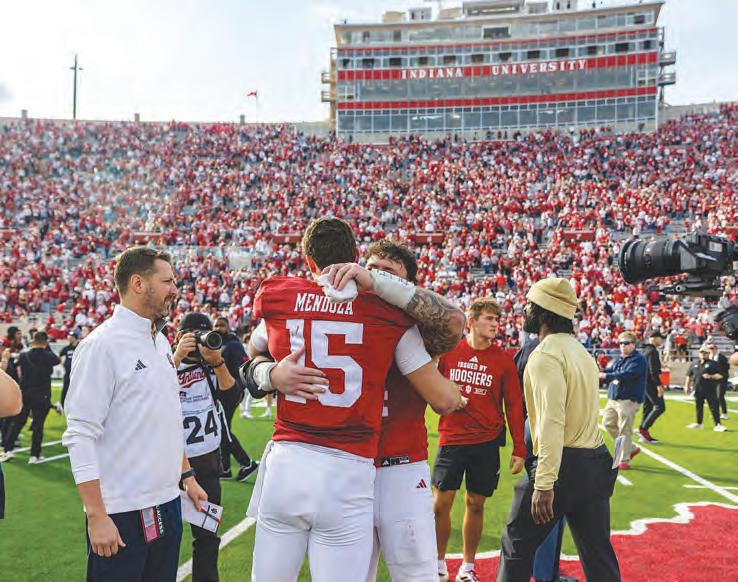

















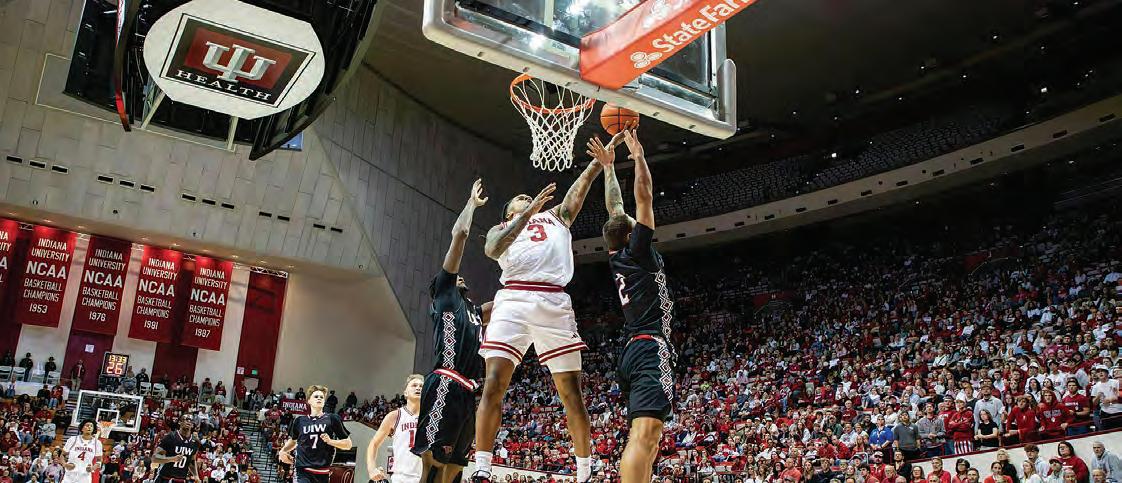

1 3 4 2

2401 S. Endwright Rd. 812-825-2684 trinityreformed.org instagram.com/trinityreformed facebook.com/trinitychurchbloom
Sunday: 9:15 a.m., Sunday Bible Classes 10:30 a.m., Worship
Evangelical Lutheran Church in America
Rose House LuMin & St.
Thomas Lutheran Church
3800 E. Third St. 812-332-5252 Stlconline.org lcmiu.net
Instagram: @hoosierlumin facebook.com/LCMIU facebook.com/StThomasBloomington
Sunday: 8:30 a.m. & 11 a.m.
@ St. Thomas Lutheran Church
3800 E. Third St.
Tuesday: 6:30 p.m. Dinner & Devotions
@ Rose House LuMin 314 S. Rose Ave.
Rose House LuMin and St. Thomas Lutheran Church invite you to experience life together with us. We are an inclusive Christian community who values the faith, gifts, and ministry of all God’s people. We seek justice, serve our neighbors, and love boldly.
Rev. - Adrianne Meier
Rev. - Lecia Beck
Rev. Amanda Ghaffarian - Campus Pastor
St. Mark’s United Methodist Church
100 N. State Rd. 46 812-332-5788 smumc.church facebook.com/BloomingtonStMarksUMC instagram: @stmarksbloomington
Sunday: 10:30 a.m., Service Mon. - Fri: Office: 9 a.m. - 3 p.m.
St. Mark’s United Methodist Church of Bloomington, Indiana is an inclusive community, bringing Christ-like love, healing, and hope to all. We embrace the United Methodist ideal of open hearts, open minds, and open doors by welcoming those of all races, cultures, faith traditions, sexual orientations, and gender identities.
Rev. John Huff - Pastor Rev. Mary Beth Morgan - Pastor

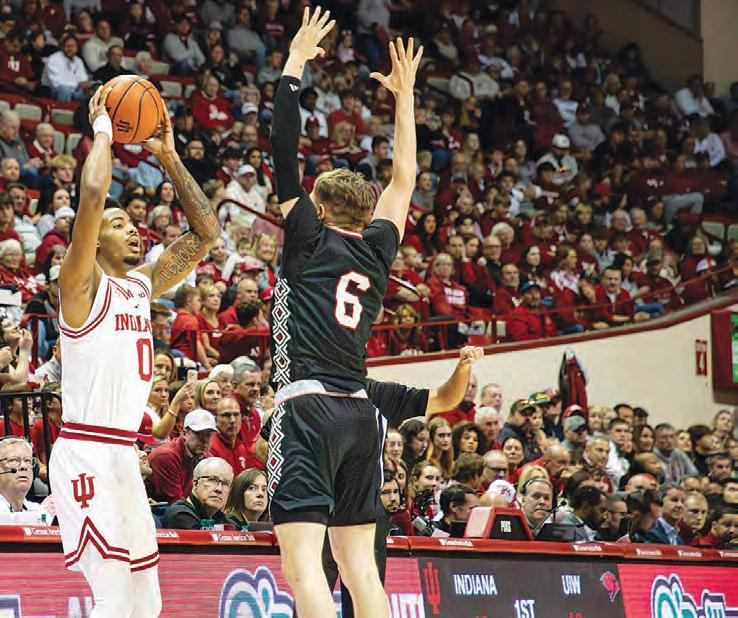
Light House Community Church
850 E. Winslow Rd. 812-339-3306 lhccbloomington.org facebook.com/lighthousecommunitychurchbloomingtonindiana instagram.com/lighthouse_community_ church
Sunday: 9 a.m., Empowerment Classes (for all ages) 10:30 a.m., Service Wednesday: 7 p.m., Bible Study
Light House Community Church is mandated, by the Word of God, to fulfill the Great Commission by winning lost souls to Christ and empowering the believer to grow in Christ through prayer, study of the Holy Bible, and life application teaching. All are welcome! Transportation is available.
Senior Pastor - Derek L. House Assistant Pastor - Clarence W. Boone,
Trinity Reformed Church 2401 S. Endwright Rd. 812-825-2684 trinityreformed.org instagram.com/trinityreformed facebook.com/trinitychurchbloom
Sunday: 9:15 a.m., Sunday Bible Classes 10:30 a.m., Worship
We are a Reformed Protestant church on the west side of Bloomington with lively worship on Sunday mornings, Bible classes beforehand, home groups, and a college age group called The Mix (a group of young adults who are both attending college and beyond).
Jody Killingsworth - Lead Pastor Max Curell - Shepherding Pastor Stephen Baker - Discipleship Pastor Philip Moyer - Worship & Youth Pastor
Christian Science
Christian Science Church
2425 E. Third St. 812-332-0536 bloomingtonchristianscience.com facebook.com/e3rdStreet
Sunday: 10 - 11 a.m., Service
Wednesday: 7 - 8 p.m., Testimony Meeting Mon. - Fri: Noon - 2 p.m., Reading Room
Interested in spirituality and healing? We welcome you to our church to explore how you can address issues spiritually and experience healing.
Inter-Denominational
Redeemer Community Church
111 S. Kimble Dr. 812-269-8975
redeemerbloomington.org facebook.com/RedeemerBtown
Instagram & Twitter: @RedeemerBtown
Sunday: 9 a.m., 11 a.m.
Redeemer is a gospel-centered community on mission. Our vision is to see the gospel of Jesus Christ transform everything: our lives, our church, our city, and our world. We want to be instruments of gospel change in Bloomington and beyond.
Chris Jones - Lead Pastor
United Methodist
Jubilee
219 E. Fourth St. 812-332-6396 jubileebloomington.org
Facebook: First United Methodist Church of Bloomington, IN Instagram: @jubileebloomington
Sunday: 9:30 a.m., Classic Worship 11:45 a.m., Contemporary Worship Wednesday: 7:30 p.m., College & Young Adult Dinner
Jubilee is a Christ-centered community open and affirming to all. We gather on Wednesdays at First United Methodist (219 E. 4th St.) for free food, honest discussion, worship, and hanging out. Small groups, service projects, social events (bonfires, game nights, book clubs, etc.), outreach retreats, and leadership opportunities all play a significant role in our rhythm of doing life together.
Markus Dickinson - jubilee@fumcb.org
Unity Worldwide Unity of Bloomington A Center for Spiritual Growth
4001 S. Rogers St. text/call: 812-333-2484 unityofbloomington.org IG: @unityofbloomington facebook@UnityofBloomington
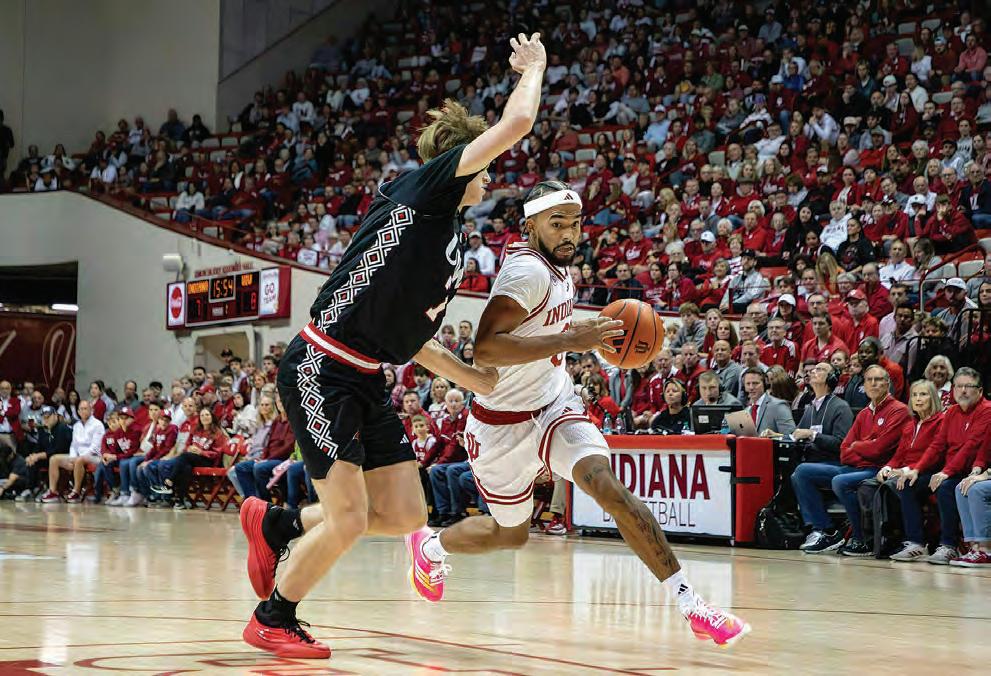
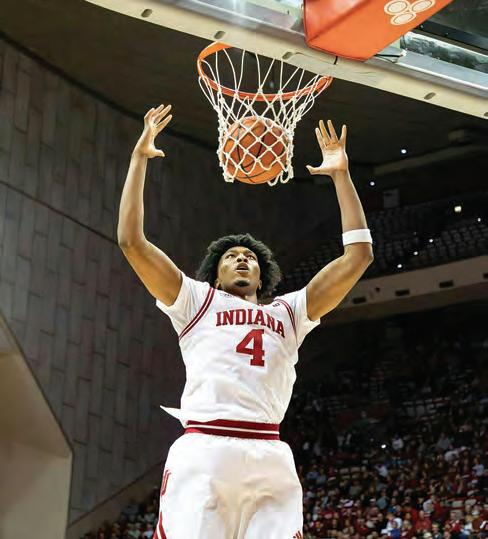

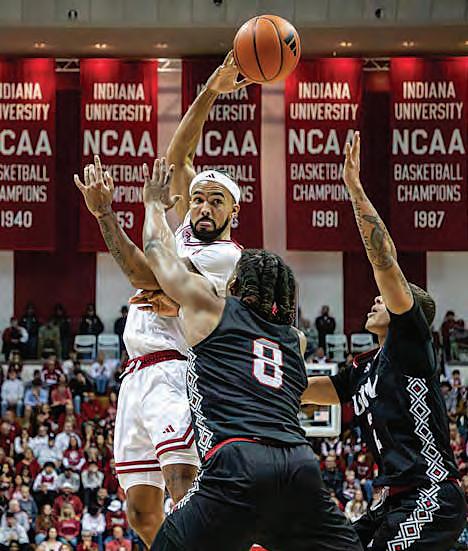
2.
3. Senior forward Sam Alexis dribbles up the court during the game against the University of the Incarnate Word on Nov. 16, 2025, at Simon Skjodt Assembly Hall in Bloomington. Alexis had eight rebounds.
4. Junior guard Jasai Miles looks for a pass during the game against the University of the Incarnate
5.
6.
7.
8.
United Church of Christ and American Baptist Churches-USA
Bloomington Friends Meeting
3820 E. Moores Pike bloomingtonfriendsmeeting.org
Sunday (in person & by Zoom):
9:45 a.m., Hymn singing 10:30 a.m., Meeting for Worship Children’s program available
We practice traditional Quaker worship, gathering in silence with occasional Spirit-led vocal ministry by fellow worshipers. We are an inclusive community with a rich variety of belief and no prescribed creed. We are actively involved in peace action, social justice causes, and environmental concerns.
Rex Sprouse - Clerk rsprouse@iu.edu
Bahá'í Faith
Bloomington Bahá'í Community and Bahá’í IU Association
424 S. College Mall Rd. 812-331-1863 bloomingtoninbahais.org facebook.com/Baháí-Community-ofBloomington-Indiana-146343332130574 Instagram: @bloomingtonbahai
Sunday: 10:40 a.m., Regular Services, Devotional Meetings. Please call or contact through our website for other meetings/activities
The Bahá'í Association of IU works to share the Teachings and Principles of the Founder, Bahá'u'lláh, that promote the "Oneness of Mankind" and the Peace and Harmony of the Planet through advancing the "security, prosperity, wealth and tranquility of all peoples."
Karen Pollock Dan Enslow
Independent Baptist Lifeway Baptist Church
7821 W. State Road 46 812-876-6072 lifewaybaptistchurch.org facebook.com/lifewayellettsville
Sunday:
9 a.m., Bible Study Classes
10 a.m., Morning Service
5 p.m.
Christ Community Church
503 S. High St. 812-332-0502 cccbloomington.org
facebook.com/christcommunitybtown
Instagram: @christcommunitybtown
Sunday: 9:15 a.m., Educational Hour 10:30 a.m., Worship Service
We are a diverse community of Christ-followers, including many IU students, faculty and staff. Together we are committed to sharing the redeeming grace and transforming truth of Jesus Christ in this college town.
Bob Whitaker - Senior Pastor Adam deWeber - Worship Pastor Dan Waugh - Adult Ministry Pastor
Great Harvest Ministry Center (GHMC Family)
1107 S. Fairview St. 812-325-2428 (GHMC) ghmcfamily.org
Sunday: 10:30 a.m.
GHMC Family is a small church with a big heart. We follow Jesus and not a religion. We believe God’s Word as written for real people living in a messy world. We are a family of believers — your home away from home. Casual, welcoming, and here to support each other through life’s challenges. Come grow with us!
First United Church 2420 E. Third St. 812-332-4439 firstuc.org facebook.com/firstuc instagram.com/firstuc2420 youtube.com/@FirstUCBtown
Sunday: 10:30 a.m., Worship
Monday: 10 a.m. via Zoom, Bible Study
We are an Open, Welcoming, and Affirming community of love and acceptance dedicated to welcoming the diversity of God’s beloved. We exist to empower, challenge, and encourage one another to live out Jesus’ ways (compassion, truth, and justice) authentically as human beings in community to create a better world.
Rev. Jessica Petersen-Mutai Senior Minister
Nazarene
Bloomington Eastview Church of the Nazarene
4545 E. Lampkins Ridge Rd. 812-332-4041 eastviewnazarene.org
Facebook - Eastview Church of the Nazarene
Sunday:
9 a.m.: Morning Prayer
9:30 a.m.: Sunday School
10:30 a.m.: Worship Service
3 p.m.: Cedar Creek Worship
Wednesday: 10 a.m.: Bible Study
Canterbury Mission
719 E. Seventh St. 812-822-1335 IUCanterbury.org
facebook.com/ECMatIU
Instagram: @ECMatIU
Youtube: @canterburyhouseatiu9094
Sunday: 3 p.m.
- 8 p.m. Fri., Sat.: By Appointment
Canterbury: Assertively open & affirming; unapologetically Christian, we proclaim the gospel of Jesus Christ by promoting justice, equality, peace, love and striving to be the change God wants to see in our world.
Ed Bird - Chaplain/Priest
1503 W. That Rd. 812-824-2768 Emmanuelbloom.com
Tony Taylor - Pastor Baptist Emmanuel Church
Christian Student Fellowship
1968 N. David Baker Ave. 812-332-8972 csfindiana.org Instagram: @csfindiana office@csfindiana.org
Monday - Friday: 10 a.m. - 5 p.m.
Christian Student Fellowship (CSF) exists as a Christ-centered community focused on helping students truly know Jesus Christ. Our ministry hub is located on campus at the last stop on the B bus. Reach out to schedule a tour, or join us for our 8 p.m. Thursday night worship service (Encounter)!
Ben Geiger - Lead Campus Minister
Stephanie Michael - Campus Minister
Nick Conrad - Associate Campus Minister
Join us at Bloomington Eastview Church of the Nazarene, where faith meets community! Connect with fellow students through engaging worship, meaningful discussions, and service opportunities. Discover a supportive space to grow spiritually and make lasting friendships. Everyone is welcome - come as you are and be a part of our vibrant family!
Rev. Bruce D. Yates - Pastor
Alicia J. Dollens - Facility Manager
Instagram & Facebook: @EmmanuelBloomington
Sunday: 9:15 a.m., Fellowship Sunday: 10 a.m., Worship Groups: Various times
Emmanuel is a multigenerational church of all types of people. Whether you are questioning faith or have followed Jesus for years, we exist to help fuel a passion for following Jesus as we gather together, grow in community, and go make disciples.
John Winders - Lead Pastor
